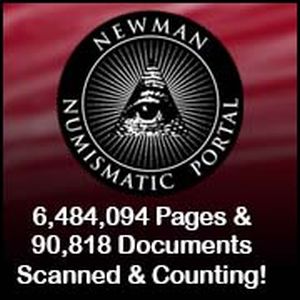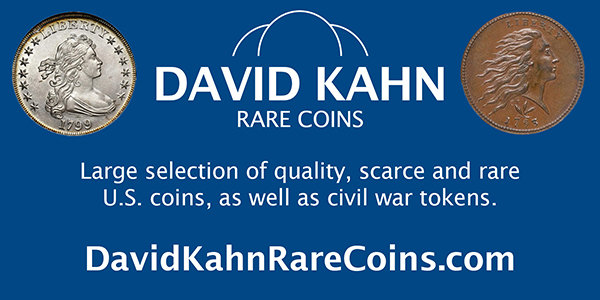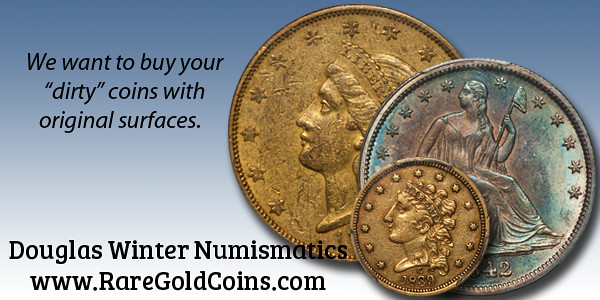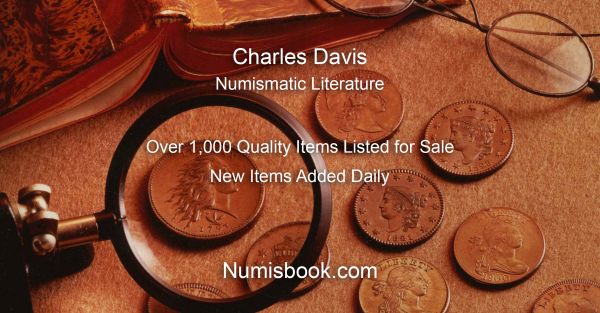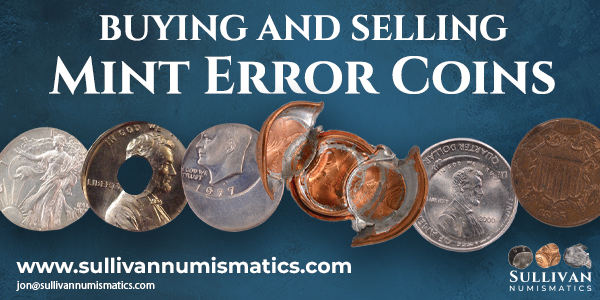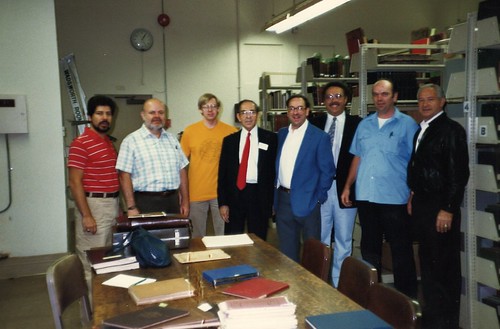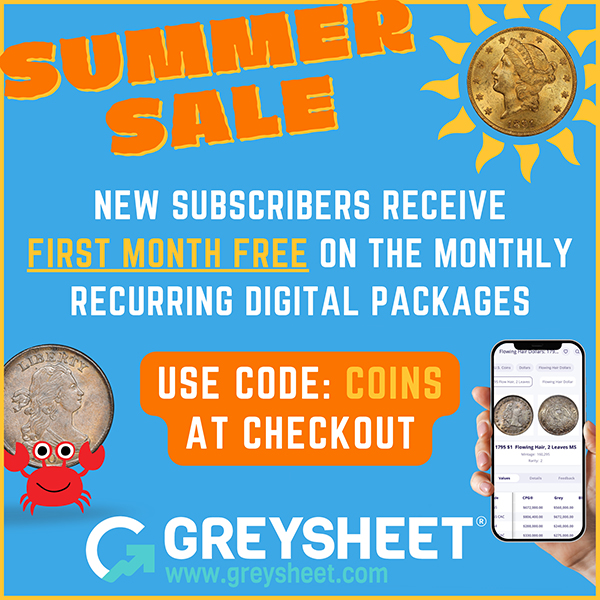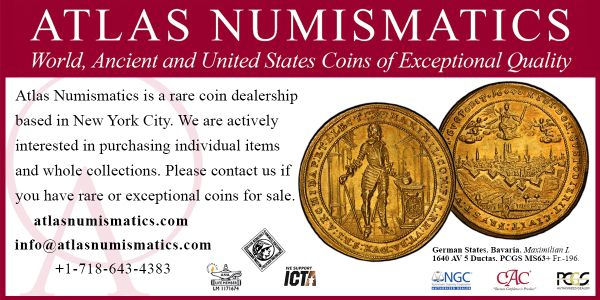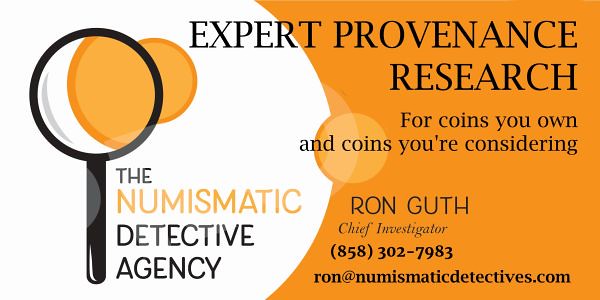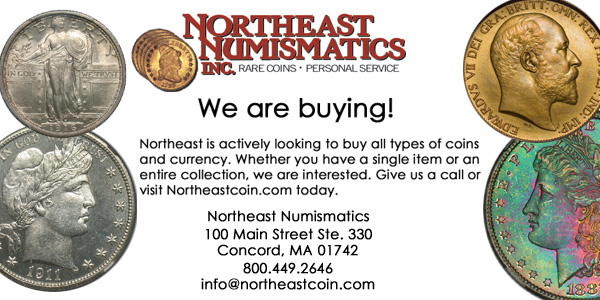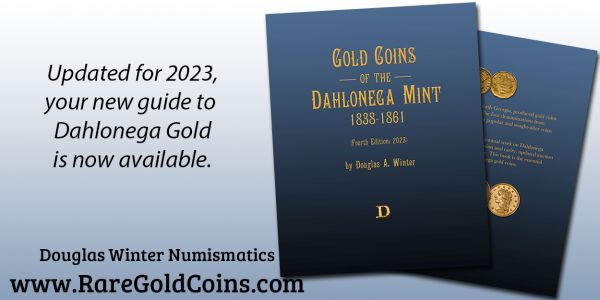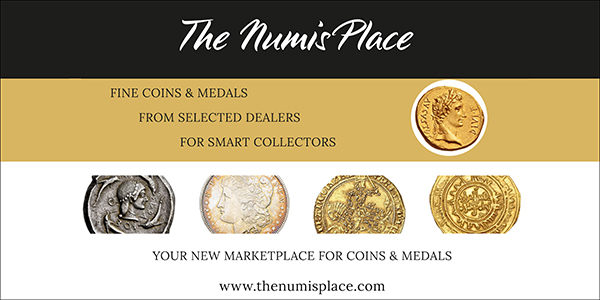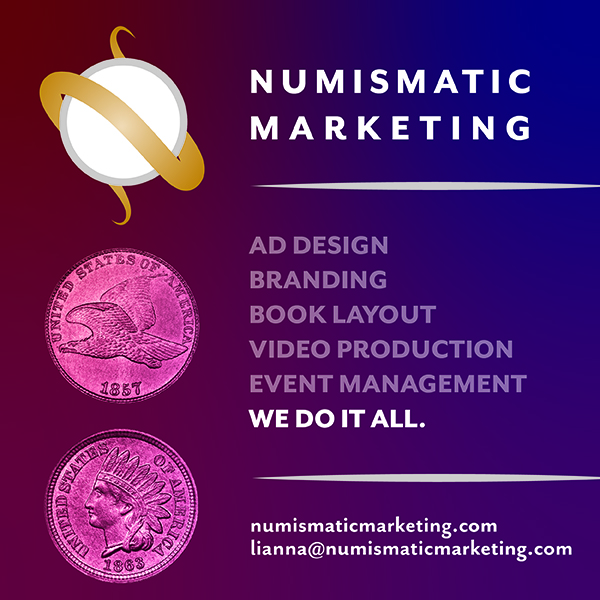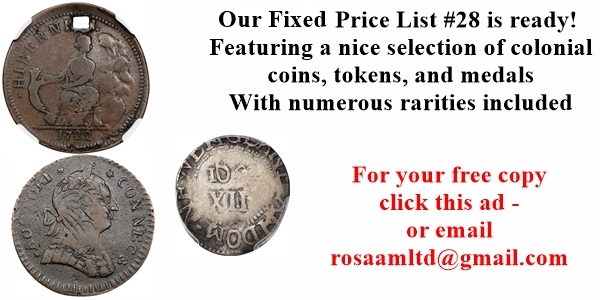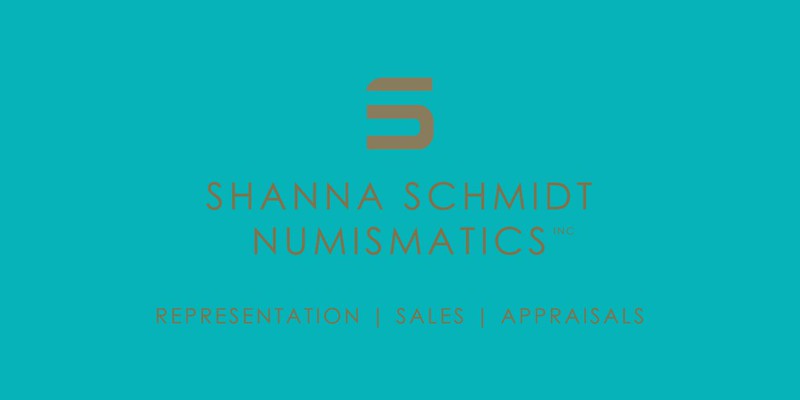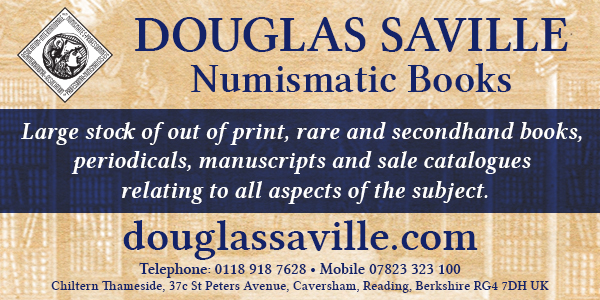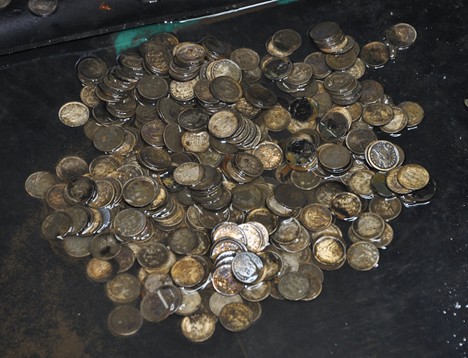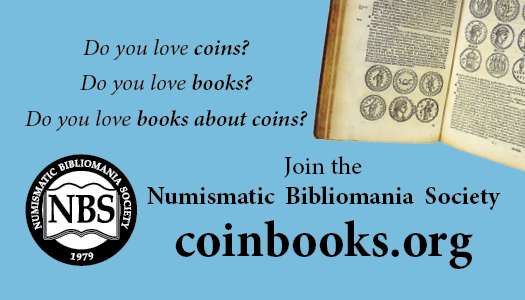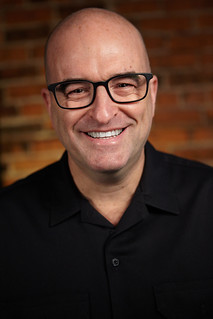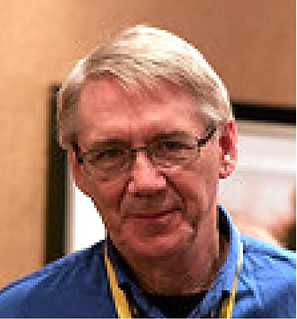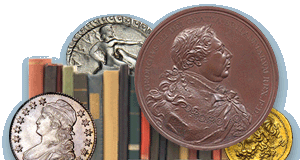
Visit our NBS Sponsors
About UsThe Numismatic Bibliomania Society is a non-profit association devoted to the study and enjoyment of numismatic literature. For more information please see our web site at coinbooks.org SubscriptionsThose wishing to become new E-Sylum subscribers (or wishing to Unsubscribe) can go to the following web page link MembershipThere is a membership application available on the web site Membership Application To join, print the application and return it with your check to the address printed on the application. Print/Digital membership is $40 to addresses in the U.S., and $60 elsewhere. A digital-only membership is available for $25. For those without web access, write to: Jeff Dickerson, Treasurer AsylumFor Asylum mailing address changes and other membership questions, contact Jeff at this email address: treasurer@coinbooks.org SubmissionsTo submit items for publication in The E-Sylum, write to the Editor at this address: whomren@gmail.com BUY THE BOOK BEFORE THE COINSale Calendar
|
- WAYNE'S WORDS: THE E-SYLUM JULY 27, 2025
- KOLBE & FANNING BCD LIBRARY WEB SALE #1
- SPINK BOOKS SOLD
- NEW BOOK: EXONUMIA OF PARAGUAY
- NEW BOOK: PAPER MONEY OF ISRAEL
- MYRON G. XENOS (1938-2025)
- JEREMIAH DESMOND BRADY (1940-2025)
- GEOFFREY BELL CANADIAN NUMISMATIC RESOURCES
- PETER TOMPA ON CULTURAL PROPERTY LAW
- VIDEO: LIBERTY LOAN BONDS OF WWI
- ANA ANNOUNCES 2025 AWARDS
- FREE WFOM COINS IN OKLAHOMA CITY
- 2025 WORLD'S FAIR OF MONEY MEDAL
- ANS AMERICA 250 MEDAL PROJECT UPDATE
- NOTES FROM E-SYLUM READERS: JULY 27, 2025
- ANA AWARDS TWO 2025 COLLEGE SCHOLARSHIPS
- NATIONAL ANTI-COUNTERFEITING MONTH
- ACEF STAMPING COUNTERFEIT COINS
- VOCABULARY TERM: RIDDLER, RIDDLING
- MYRON GUST XENOS (1938-2025)
- TREASURE TALK WITH BOB EVANS, EPISODE 6.2
- STACKS BOWERS TO SELL JAMES STACK COLLECTION
- 2200 YEAR OLD HOARD DISCOVERED IN CZECHIA
- BARTON DISCUSSES COLONIAL NUMISMATICS
- COINS FROM THE THIRTY YEARS WAR FOUND
- BERMANIAN 50TH ANNIVERSARY COIN
- ABOUT THIS ISSUE: JULY 27, 2025
Content presented in The E-Sylum is not necessarily researched or independently fact-checked, and views expressed do not necessarily represent those of the Numismatic Bibliomania Society.
WAYNE'S WORDS: THE E-SYLUM JULY 27, 2025
 New subscribers this week include:
Josh Wadsworth courtesy Sam Deep;
Brennan McKain courtesy Justin Hinh;
and
John Janeczek.
Welcome aboard! We now have 7,243 subscribers.
New subscribers this week include:
Josh Wadsworth courtesy Sam Deep;
Brennan McKain courtesy Justin Hinh;
and
John Janeczek.
Welcome aboard! We now have 7,243 subscribers.
Thank you for reading The E-Sylum. If you enjoy it, please send me the email addresses of friends you think may enjoy it as well and I'll send them a subscription. Contact me at whomren@gmail.com anytime regarding your subscription, or questions, comments or suggestions about our content.
This week we open with a numismatic literature sale, two new books, and two obituaries, updates from the Newman Numismatic Portal, and more.
Other topics this week include exonumia of Paraguay, paper money of Israel, cultural property law, SPINK Books, Liberty Loan Bonds, ANA announcements, riddling, the James Stack collection, and coin hoards.
To learn more about the Autonomous Bronze Coinage of Sikyon, The Money Tree, Geoffrey Bell, Peter Tompa, David Lange, National Anti-Counterfeiting month, the dimes of the S.S. Central America, and the anniversary coin honoring His Royal Majesty of Bermania, King Alanus I, read on. Have a great week, everyone!
Wayne Homren
Editor, The E-Sylum
KOLBE & FANNING BCD LIBRARY WEB SALE #1
Numismatic Booksellers Kolbe & Fanning have a web sale closing Thursday, July 31, 2025. Here are some selections. -Editor
BCD Library Web Sale #1 Thursday, July 31 @ 12:00 noon
Kolbe & Fanning Numismatic Booksellers will be holding a Web Sale of selections from the extraordinary BCD Library on Thursday, July 31 at 12:00 noon Eastern Time. Our Web Sales generally focus on useful but lower-price books, catalogues and other numismatic publications, and this initial offering in this format of material from the BCD Library includes publications on a wide variety of topics, mostly pertaining to antiquity, all of which are listed with a starting price of only $10. The online catalogue can be accessed at bid.numislit.com. There is no printed catalogue.
Along with more commonly available references, a number of rarities and other delicacies are included. Some highlights of this first Web Sale include:
Lot 107: the 1968 festschrift published in honor of Willy Peremans, including Heyman's study of the Larissa Cremaste mint in Thessaly
Lot 151: the monumental three-volume study of Tenos, by Etienne and Braun, with a little-known but highly important numismatic section
Lot 292: Phillip Lederer's scarce 1943 publication on ancient coins in Swiss public and private collections
Lot 302: Wilhelm Lermann's scarce 1900 booklet on the images of Athena on ancient Greek coins
Lot 418: two 1689 works, by Jean-Pierre Rigord and François Graverol, on ancient coins depicting Herod Antipas and the god Pan
Lot 465: Michel Soutzo's 1884 study of ancient weight standards, a rare and highly important work that is underappreciated today
Lot 512: a handsomely bound copy of Jennifer Warren's 1983–1985 study of The Autonomous Bronze Coinage of Sikyon.
Register early to bid online
Kolbe & Fanning use Auction Mobility as our third-party online bidding platform, which is separate from our retail site. Auction Mobility is an app-based platform allowing users the ability to participate in the sale through phones, tablets and computers. To register for the sale, bidders must go to
bid.numislit.com and sign up. Once you have set up an account, you may browse lots, place advance bids, or participate in the live sale online. Those wishing to participate on their devices can download the Kolbe & Fanning app through the Apple or Google Play Store.
For more information, or to bid, see:
https://bid.numislit.com/
SPINK BOOKS SOLD
Longtime numismatic book publisher Spink Books has been sold to a new owner. This announcement was dropped earlier this week. -Editor
Spink & Son Ltd. is delighted to announce the sale of the assets and goodwill of Spink Books, the leading publisher of numismatics books, to The Pen & Sword Group, one of the leading publishers of military, naval and aviation history.
Spink Books is the leading imprint for numismatic book publishing and has been supplying and publishing numismatic reference works for collectors for over 100 years. Many of its titles have become the definitive reference works in their fields and are highly sought after by enthusiasts, collectors, dealers and auctioneers worldwide. Spink Books has also published many specially commissioned works on behalf of governments, major institutions and private collectors as well as being the distributors for a range of publications, on behalf of many learned societies and authors, including the Royal Numismatic Society and the British Numismatic Society.
The Pen & Sword Group is one of the world's leading publishers of military, naval and aviation history as well as having specialist imprints in the fields of local history, ancient history, family history, crime, and general interest publishing. Pen & Sword is also the majority shareholder in Script Publisher Services, one of the leading third-party publisher book sales, marketing and distribution companies, and who have been the trade distributors for Spink Books for a number of years.
Olivier Stocker, Group Chairman and Chief Executive of Spink Group said,
"As the auction business is our true DNA and our sole focus is on offering the most professional service to our global buyers and sellers in all categories of Collectables from our main salesrooms in London, Hong Kong, New York, we believed that it was the right time for the book division to reside with an equally focused publishing group and we are pleased to have found an ideal partner and custodian in Pen & Sword, where I believe the list is in safe hands and with whom we hope to continue to collaborate going forward. They will look after our portfolio of existing books and continue to sell them, whilst our authors and collectors wishing to publish new books will have a privileged access to Pen & Sword Books' team".
Charles Hewitt, Managing Director of Pen & Sword, added,
"We are delighted to welcome Spink Books and its authors which will form part of a new imprint, Script Collectables, and we are looking forward to continuing to build what is an excellent list and a well-respected imprint. The business is a great fit with our portfolio of imprints and we look forward to working together to serve these publishing markets".
Spink Books customers can still purchase all Spink titles seamlessly via the current Spink Books website, the same way as before, with Pen & Sword now managing orders and fulfilment.
Good luck to the new owners, and hopefully they'll find a way to continue the longstanding numismatic publishing tradition under the new imprint. -Editor
To visit Pen & Sword websites, see:
https://www.penandswordbooks.com/
https://www.pen-and-sword.co.uk/
NEW BOOK: EXONUMIA OF PARAGUAY
Pre-orders are being taken for Raúl Olazar's new book in Spanish on the exonumia of Paraguay. Here's a Google-translated description from the publisher's website. -Editor
Moneda Privada en el Paraguay - La historia a través de la exonumia
Private Currency in Paraguay - History through Exonumia
Raúl Olazar
 A more detailed and illustrated research work possible (I have no doubt that there will be a more advanced Volume 2, because it has very much to be increased), which was born from the passion and curiosity awakened in my tokens and vouchers from Paraguay. The objective is to disseminate the history of private money in our country — a system that plays a very important role in history, but that is still quite unknown both for collectors and for Paraguayan people in general.
A more detailed and illustrated research work possible (I have no doubt that there will be a more advanced Volume 2, because it has very much to be increased), which was born from the passion and curiosity awakened in my tokens and vouchers from Paraguay. The objective is to disseminate the history of private money in our country — a system that plays a very important role in history, but that is still quite unknown both for collectors and for Paraguayan people in general.
My idea was to give continuity to the legacy of two great numismatists that our country has and that now rest on another plane; We also offer a solid foundation to new collectors, teaching institutions and numismatists interested in knowing more about the history of private money, its antecedents, creation and circulation.
From now on it is clear that this is not a catalog with prices, but rather an illustrated guide with images of existing parts. Embora does not mention values, the book indicates on its face reference to some levels of rarity. Everything that still needs to be learned, we know, we can reach a second volume.
Book: Private Currency in Paraguay - History through exonumia
Publisher: Selo Editorial Veritas
Author: Raúl Olazar
Year: 2025
Pages: 136
Printing: 15x21cm / 250g Card Cover + 6cm Flap / 90g Offset - Color
Language: Spanish-EN
Attention: The image of the cover of this advertisement was edited/formatted by the Castro numismatic team to best suit our site, and due to the suitability or issues of the book edition, the cover of the delivered book may contain some minor differences.
Raúl writes:
"The new book will be presented and delivered to those who purchase it in advance at the 5th International Convention of Historians and Numismatists in Rio 2025, or the corresponding shipment will be made at a later date."
To read the complete article, see:
Moneda Privada en el Paraguay - La historia a través de la exonumia, Raúl Olazar
(https://www.numismaticacastro.com.br/produtos/moneda-privada-en-el-paraguay-la-historia-a-traves-de-la-exonumia-raul-olazar/)
NEW BOOK: PAPER MONEY OF ISRAEL
Although it was published in 2022, I don't believe we've mentioned Raphael Dvir's book on the paper money of Israel. -Editor
Paper Money of Israel, Design and Printing Processes of the First Decade, 1948-1958
Raphael Dvir
 The founding of the State of Israel was recent in historical terms, yet its history is still being compiled. Raphael Dvir's work, Paper Money of Israel, Design and Printing Processes of the First Decade, 1948-1958, was not previously covered by numismatic researchers as much of the information was lost for decades.
The founding of the State of Israel was recent in historical terms, yet its history is still being compiled. Raphael Dvir's work, Paper Money of Israel, Design and Printing Processes of the First Decade, 1948-1958, was not previously covered by numismatic researchers as much of the information was lost for decades.
Dvir's work is an illustrated history, with extensive illustrations of notes and design elements used during the design process. The beloved Landscape series and previously unknown and unadopted designs are covered. The book is the most significant advancement in Israeli numismatic research in decades.
Price: $179.00
For more information, or to order, see:
Paper Money of Israel, Design and Printing Processes of the First Decade, 1948-1958
(https://currency.ha.com/paper-money-of-israel-book.zx)
MYRON G. XENOS (1938-2025)
Numismatic publisher and literature dealer Myron Xenos has passed. Thanks to Tom Harrison and Terry Stahurski for passing along this sad news. First, here's Myron's online obituary. -Editor
 Myron Xenos, age 86, of North Ridgeville, Ohio, passed away peacefully on July 20, 2025, with his wife at his side. He was a loving husband, father and grandfather and a friend to many. He will always be remembered for his love for his family, kindness, sense of humor, and love of animals.
Myron Xenos, age 86, of North Ridgeville, Ohio, passed away peacefully on July 20, 2025, with his wife at his side. He was a loving husband, father and grandfather and a friend to many. He will always be remembered for his love for his family, kindness, sense of humor, and love of animals.
He was born August 3, 1938, in Cleveland, Ohio, to the late James and Margaret Xenos (nee Fanelli). He is survived by his beloved wife of 63 years, Daryl Xenos (nee Eckert), his daughters, Stacey Xenos-Maverick (Mike) and Stefanie Xenos, and his granddaughter, Taylor Golas.
Myron grew up in Rocky River, Ohio. As a young man he collected stamps, coins and their literature. He was also active in the Greek Orthodox Youth Association and was a member of the Masonic Order of DeMolay. After graduating from Rocky River High School, he attended Kent State University where he met his lovely wife and received his bachelor's degree in 1962. Myron proudly served in the United States Army (1958-1963).
In 1962, Myron opened his own public accounting firm and received his Certificate of Enrollment as an Enrolled Agent in 1974. He also served as the Finance Director for the City of Rocky River during the 1970's.
He became a member of the American Numismatic Association in 1961 and began selling numismatic literature in 1967. In 1986, he and his partner started a numismatic publishing company called The Money Tree and began holding mail bid auctions of numismatic literature, holding 32 auctions, with the last auction being held in 1999.
In 1978, Myron opened the first new business, a deli with an ice cream counter, in Beachcliff Market Square which was located in the old renovated Beachcliff Theater in Rocky River. The restaurant was a showcase to many antiques, including a Marantz Pianocorder that played music on magnetic tapes, and numerous stained-glass windows and chandeliers.
Over the years, Myron was involved in many other endeavors. He was a partner in a vending machine company, and he was a partner in real estate development. He was a collectibles and rare coin auctioneer on the WVIZ televised auction for over 40 years. He was also a partner/owner of harness racing horses.
Visitation will be held on Saturday, August 2, 2025, from 10:30-12:00 at Westlake United Methodist Church, 27650 Center Ridge Road, Westlake OH followed by a Celebration of Life service to be held in the church sanctuary at noon. We will continue the Celebration of Life with a luncheon in the church fellowship hall, immediately after the service. Private interment at Lakewood Park Cemetery, Rocky River, Ohio.
In lieu of flowers, please consider donations in Myron's honor to Hospice of the Western Reserve (www.hospicewr.org/give), Rock it Out, Inc. (www.rockitout.org) or Friendship APL of Lorain County (www.friendship APL.org/donate).
To read the complete online obituary, see:
Myron G. Xenos Obituary
(https://www.buschcares.com/obituaries/Myron-G-Xenos?obId=43718755)
That's a great photo of Myron, always a happy, smiling, helpful person, a joy to be around. If memory serves I first met Myron and his Money Tree partner Ken Lowe at the famous "Invasion of Louisville" excursion to Armand Champa's numismatic library. As I ramped up my own numismatic library I often sold duplicates through Money Tree, sometimes making the drive from Pittsburgh to Rocky River with a load of boxes in the trunk.
Myron would insist on buying lunch and we dined at a nearby restaurant where he was a regular. I would always get together with Myron and Ken and fellow numismatic bibliophiles at coin shows, often sharing lunch or dinner and a ton of laughs. I'll repeat my earlier phrase here - Myron was a joy to be around. His smile and sense of humor were infectious.
Here's an earlier article by John Lupia with additional information. -Editor
 Myron Xenos was born on August 3, 1938 in Cleveland, Ohio. As a young man he collected stamps, coins and their literature. In May 1956 he won third place award for his stamp exhibition at the Fifth International Philatelic Exhibition (FIPEX), at the New York Coliseum.
Myron Xenos was born on August 3, 1938 in Cleveland, Ohio. As a young man he collected stamps, coins and their literature. In May 1956 he won third place award for his stamp exhibition at the Fifth International Philatelic Exhibition (FIPEX), at the New York Coliseum.
In September 1961, he joined the ANA as Member No. 42733, listed as a collector of U. S. and Canadian coins. He seems to have had a natural predilection for U. S. Bust-type half dollars.
On December 16, 1961, he married Daryl Eckert, daughter of Samuel M. and Margaret F. Eckert. They had two daughters. He graduated Kent State University in 1962. He opened his own accounting firm in 1962.
 In 1967 he began selling numismatic literature doing business as Security Coin Trust. In 1971, he was partners with brother in-law Gary B. Eckert, and Harry Mueller in Leo Vending. This is where he acquired many rare coins.
In 1967 he began selling numismatic literature doing business as Security Coin Trust. In 1971, he was partners with brother in-law Gary B. Eckert, and Harry Mueller in Leo Vending. This is where he acquired many rare coins.
In 1978, he became a partner as a real-estate developer with Xenophon Zapis in the Tiffany Ridge Corporation building condominiums at Rocky River.
Also in 1978, he was a restauranteur as well as an antiques expert and owned a restaurant in Beachcliff Market Square which had music played by a Marantz Piano Corder that played music on magnetic tape.
 In the September 1980 issue of The Numismatist on page 2375 he advertised as The Money Tree, a coin dealership specializing in foreign crowns and dollars, 1260 Smith Court, Rocky River, Ohio.
In the September 1980 issue of The Numismatist on page 2375 he advertised as The Money Tree, a coin dealership specializing in foreign crowns and dollars, 1260 Smith Court, Rocky River, Ohio.
In 1981, he served the T. V. auction show on Channel 25 as the rare coin dealer.
In 1986, he became partners with Ken Lowe in the firm of The Money Tree. Myron was the president and owner, and Ken Lowe was the editor.
The Money Tree began holding mail bid auctions of numismatic literature in July 1987, and published their house organ Out on A Limb. They held thirty-two auctions, which only twenty-eight are known by me. Their last auction was held on December 4, 1999.
To read the earlier E-Sylum article, see:
MYRON XENOS (1938-PRESENT)
(https://www.coinbooks.org/v20/esylum_v20n33a20.html)
In his own words, here's how Myron settled into numismatics. -Editor
"Back in 1956, I was a high school senior, and did my shopping, so to speak, at Halle Bros. Dept. Store, the building which now houses the Drew Carey TV show's Winfred Lauder Store.
"48 years ago, the stamp & coin dept. was operated by Carl DiFalco, who was my mentor in the coin hobby. One day I was looking at some coins and also bought some stamps from the King Farouk collection. Carl looked at me and said, much like a father would, "You can't collect both stamps & coins successfully. You have to divorce one or the other." Not wanting to be thought a bigamist, I chose coins.
"Several years later, I became his accountant and tax advisor when he opened his own shop. From one decade to the next, I became his mentor regarding his finances. His eyesight began to fail, and I then had a coin dealer who was legally blind. We were friends till he died, but we spent many hours sharing our opinions about numismatics, politics, and taxes."
To read the earlier E-Sylum article, see:
DEPARTMENT STORE COIN LORE
(https://www.coinbooks.org/esylum_v07n44a12.html)
With this news coming on the heels of George Kolbe's passing, Jeff Dickerson writes:
"There's an old adage that's apropos. It never rains but it pours."
Here's Tom Harrison's remembrance, with a photo of Tom and Myron taken in Tom's numismatic library in 2012. -Editor
Tom writes:
"I began collecting numismatic literature to support my coin collecting back in the 1970s and 1980s, but drifted away from the hobby until 2008 when I returned with an insatiable appetite for numismatic literature. Once back, one of my first calls was to The Money Tree's Myron Xenos from whom I had purchased a few volumes from decades ago. Myron said he was no longer in business, but invited me to come to Ohio with the assurance that I would find a few boxes of literature that would make the trip worthwhile. Naturally, I made the trip from central Illinois to Rocky River Ohio.
 "Back in 1985, recognizing their common interests, a mutual friend introduced Myron to Ken Lowe at a local coin show. Their friendship evolved into the Money Tree numismatic literature business. The bookmen conducted 29 mail bid auctions and produced the lively and informative house organ Out On A Limb. Ken did the cataloging and Myron headed up the production and publication arm of the business. Today you will find The Money Tree Press logo on the spine of some favorite numismatic books like Bust Half Fever by Edgar Souders, American Numismatic Biographies by Pete Smith and a reprint of Ed Frossard's Numisma. Following Ken's untimely death, David Sklow joined Myron and they conducted three additional sales under the Money Tree banner. Of Myron's varied numismatic interests, his Bust Half dollars were closest to his heart.
"Back in 1985, recognizing their common interests, a mutual friend introduced Myron to Ken Lowe at a local coin show. Their friendship evolved into the Money Tree numismatic literature business. The bookmen conducted 29 mail bid auctions and produced the lively and informative house organ Out On A Limb. Ken did the cataloging and Myron headed up the production and publication arm of the business. Today you will find The Money Tree Press logo on the spine of some favorite numismatic books like Bust Half Fever by Edgar Souders, American Numismatic Biographies by Pete Smith and a reprint of Ed Frossard's Numisma. Following Ken's untimely death, David Sklow joined Myron and they conducted three additional sales under the Money Tree banner. Of Myron's varied numismatic interests, his Bust Half dollars were closest to his heart.
"When my wife and I arrived we found the basement and second floor of Myron's office overflowing with books, catalogs and ephemerial material. It was an honest-to-goodness treasure hunt, but the real treat was hearing the many entertaining stories surrounding the collectors and his experiences with them.
"That evening Myron and his wife, Daryl, invited us to dinner and back to their home to explore his extensive numismatic library. It was about this time that Myron was beginning to sell his library through a number of David Sklow auctions. Nearly every year until 2020 we visited Myron and Daryl always bringing home a few boxes of literature. Myron would let most of the things I was interested in go, but always would hold back a couple of items. I theorized that was so we would return the next year and invariably the next year he was ready to send those pieces my way. Following the 2012 ANA Convention in Rosemont Myron and Daryl came to visit us and check out my fledgling library. Between visits we periodically talked on the phone and occasionally I would receive a surprise package of goodies from Rocky River.
Myron, thanks for the many fond memories."
Dan Hamelberg writes:
"Sorry to hear. Myron was always upbeat and a welcome participant from both directions of collector or dealer. He will be missed."
Steve Davis writes:
"Our dear friend and one of the nicest guys in rare coins and numismatic literature, Myron Xenos has passed away. I have been to see him several times the last few years and dozens of times prior, it was really sad to see him losing his health but he still had his humor and wit. What a great person and personality he was, a true collector of all things numismatic and an icon of the numismatic literature world here in the Midwest. He will be truly missed."
Terry Stahurski writes:
"Myron leaves us with some fantastic memories and will be missed. "
Numismatic bibliophiles on August 11, 1989 at the Carnegie Library of Pittsburgh rare book room. Pictured: Mark Auerbach, George Kolbe, Wayne Homren, Frank Katen, Ken Lowe, Myron Xenos, John Bergman, and Armand Champa. Sadly, all are now gone except for myself and Mark Auerbach.
To read the earlier E-Sylum article, see:
COUNTERFEIT-DETECTING PENS MAKE CLERKS LAZY
(https://www.coinbooks.org/esylum_v09n47a24.html)
THE MYRON XENOS NUMISMATIC LIBRARY
(https://www.coinbooks.org/esylum_v10n05a03.html)
NUMISMATIC AUCTIONS SALE 69 LITERATURE LOTS
(https://www.coinbooks.org/v28/esylum_v28n07a03.html)
CARNEGIE LIBRARY'S SET OF THE NUMISMATIST
(https://www.coinbooks.org/v25/esylum_v25n29a06.html)
JEREMIAH DESMOND BRADY (1940-2025)
New York Numismatic Club Secretary-Treasurer John Janeczek submitted this notice of the passing of Past President Jeremiah Brady. He was born October 25, 1940. George Cuhaj provided the image of Brady's presidential medal (courtesy Stacks Bowers). Thank you. -Editor
 The New York Numismatic Club is saddened to announce the death of Past President Jeremiah Brady on July 11, 2025. Dr. Brady served as President of the Club in 1980 and 1981. He was also a member of the Board of Directors.
The New York Numismatic Club is saddened to announce the death of Past President Jeremiah Brady on July 11, 2025. Dr. Brady served as President of the Club in 1980 and 1981. He was also a member of the Board of Directors.
PP Brady earned his AB and PhD from Harvard University and his MLitt from Cambridge University, where he was a Fullbright Scholar. Among other positions, he served as Curator of Medieval Coins and Medals at the ANS from 1970 until 1980. Dr. Brady oversaw the publication of the ANS's holdings of early English coinage in the Sylloge of Coins of the British Isles. His research has focused on the coinage of Charles I. PP Brady is survived by his wife of 56 years, the former Marion Talbot; his sister, Sue Brady Wankowicz of Oregon and Ellen Brady Finn Kelley of Ann Arbor, MI, sister-in-law, Sally Brady of Hartland Four Corners, VT and numerous nieces and nephews.
A Memorial Mass will be held at 10:00 am, Saturday, August 2, 2025, at Our Lady of the Holy Angels RC Church, 465 Main St., Little Falls. In lieu of flowers, please consider a memorial contribution to Little Falls Public Library, 8 Warren Street, Little Falls, NJ 07424 or Cambridge in America, PO Box 9123, JAF BLG, New York, NY 10087-9123.
"After the ANS he worked as director of the numismatic division of Sotheby's in Manhattan, and then for the Educational Testing Service in Princeton, NJ."
To read the online obituary, see:
Jeremiah Brady Obituary
(https://www.bizubparker.com/bzd/obituary/Jeremiah-Brady)
GEOFFREY BELL CANADIAN NUMISMATIC RESOURCES
A donation to the J. Douglas Ferguson Historical Research Foundation will honor the memory of the late Geoffrey Bell by funding the continued expansion of the Foundation's online research portal, which will now be renamed the Geoffrey Bell Canadian Numismatic Resources (GBCNR). Here's the full press release. (Photos courtesy of Canadian Coin News). -Editor
Geoffrey Bell's legacy lives on through Ferguson Foundation Numismatic Research Portal
 The J. Douglas Ferguson Historical Research Foundation is honoured to announce a major $250,000 donation, pledged over the next five years, in memory of the late Geoffrey Bell—a cherished numismatist, dealer, auctioneer, and educator. This generous gift will support the continued growth of the Foundation's online research portal, ensuring Geoff's passion for knowledge and history endures for future generations.
The J. Douglas Ferguson Historical Research Foundation is honoured to announce a major $250,000 donation, pledged over the next five years, in memory of the late Geoffrey Bell—a cherished numismatist, dealer, auctioneer, and educator. This generous gift will support the continued growth of the Foundation's online research portal, ensuring Geoff's passion for knowledge and history endures for future generations.
Offered through Brian Bell and the Bell family, the contribution will directly fund the expansion of the Foundation's Canadian Numismatic Resources website, which will be renamed the Geoffrey Bell Canadian Numismatic Resources (GBCNR) in recognition of their support.
Geoffrey Bell, a long-time director and past chair of the Foundation, held the Ferguson Foundation close to his heart. "The Ferguson Foundation's numismatic website was a project Geoff strongly believed in," said Foundation Chair Robert Forbes. "It is wonderful that his family wishes to honour him by sponsoring its development and expansion. The Foundation is deeply grateful for this generous donation and the opportunities it creates for the website's future."
 The Bell family is moved to see Geoff's legacy carried forward through this meaningful gift, dedicated to advancing Canadian numismatic research for generations to come. As Brian shared, "For Dad, collecting was never just about the items—it was about the stories they told and the knowledge they sparked. Each rare find ignited his curiosity, and he took great joy in sharing what he learned with others through his writing. Supporting the continued growth of the Geoffrey Bell Canadian Numismatic Resources (GBCNR) is not only a tribute to his passion but also a heartfelt way for us to keep his spirit alive in the community he loved so much."
The Bell family is moved to see Geoff's legacy carried forward through this meaningful gift, dedicated to advancing Canadian numismatic research for generations to come. As Brian shared, "For Dad, collecting was never just about the items—it was about the stories they told and the knowledge they sparked. Each rare find ignited his curiosity, and he took great joy in sharing what he learned with others through his writing. Supporting the continued growth of the Geoffrey Bell Canadian Numismatic Resources (GBCNR) is not only a tribute to his passion but also a heartfelt way for us to keep his spirit alive in the community he loved so much."
Bell, who passed away in July 2024, was a monumental figure in Canadian numismatics. Driven by insatiable curiosity and infectious passion, he created a lasting legacy as a devoted collector, inspiring educator, and trusted mentor.
What began as a small coin shop in Moncton, N.B., in 1986 has blossomed into a remarkable family legacy. Together with his son Brian and daughter-in-law Dawn, Geoff helped establish Geoffrey Bell Auctions, which has become a pillar of Canada's numismatic auction scene. Over the years, the company has handled some of the country's most treasured collections, reflecting Geoff's deep passion for paper money, historical medals, and the stories they tell. Most recently, this legacy has grown even stronger with the addition of a third generation—Geoff's grandson, Malcolm Bell, who has proudly opened The Coin Vault, carrying forward the family's enduring love for numismatics.
Beyond his professional achievements, Geoff was deeply committed to the wider numismatic community. He served two terms as president of the Royal Canadian Numismatic Association (RCNA), was named an RCNA Fellow in 1998, and received the prestigious J. Douglas Ferguson Award in 1987—the highest honour in Canadian numismatics—for his outstanding contributions to research and education. Just last year, 2024, he was awarded Honorary President of the RCNA.
Geoff's influence extended well beyond titles and awards. A gifted educator and dedicated public school teacher, he inspired countless collectors through his wisdom, mentorship, and encouragement of new voices in the hobby. His visionary leadership helped shape the Ferguson Foundation's mission to preserve Canada's numismatic heritage and make it accessible to all. Today, those values live on through the Bell family's generous gift—a lasting testament to his passion and legacy.
The Foundation's website, the Geoffrey Bell Canadian Numismatic Resources (GBCNR) serves as a vital digital repository of historically significant Canadian numismatic publications and archival material. It supports researchers, collectors, and historians by making key documents freely available and searchable online. With the Bell family's sponsorship, this resource will continue to expand and stand as a living tribute to one of the hobby's most dedicated figures.
To learn more about the Foundation's work, visit jdfergusonfoundation.ca or contact Robert Forbes, Foundation Chair at rforbes1948@gmail.com.
To read the earlier Canadian Coin News article, see:
Geoffrey Bell's legacy lives online
(https://canadiancoinnews.com/geoffrey-bells-legacy-lives-online/)
To read the earlier E-Sylum articles, see:
WEBSITE: CANADIAN NUMISMATIC RESOURCES
(https://www.coinbooks.org/v25/esylum_v25n49a08.html)
CANADIAN NUMISMATIC RESOURCES SITE ANNOUNCED
(https://www.coinbooks.org/v26/esylum_v26n07a10.html)
PETER TOMPA ON CULTURAL PROPERTY LAW
The latest addition to the Newman Numismatic Portal is a video of a presentation by IAPN Executive Director on cultural property law and practice. Project Coordinator Len Augsburger provided the following report. -Editor
Peter Tompa Presents to the St. Louis Ancient Coin Study Group
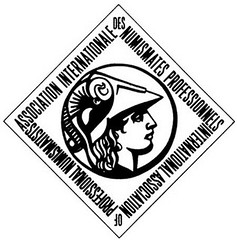 The St. Louis Ancient Coin Study group meets monthly via Zoom and features speakers presenting on various aspects of ancient and byzantine numismatics. At the recent July 17 meeting, Peter Tompa, IAPN Executive Director, spoke on cultural property law and practice. Tompa discussed the complexities surrounding U.S. customs laws related to the import of ancient coins. He explained that importers - particularly dealers or buyers from foreign auctions - risk seizure of coins without proper documentation, especially regarding origin and valuation. Tompa outlined how misrepresentations, Cultural Property Implementation Act restrictions, and national patrimony laws can all justify seizures. He also noted that designated import restriction lists have expanded over time to include more coins, sometimes controversially.
The St. Louis Ancient Coin Study group meets monthly via Zoom and features speakers presenting on various aspects of ancient and byzantine numismatics. At the recent July 17 meeting, Peter Tompa, IAPN Executive Director, spoke on cultural property law and practice. Tompa discussed the complexities surrounding U.S. customs laws related to the import of ancient coins. He explained that importers - particularly dealers or buyers from foreign auctions - risk seizure of coins without proper documentation, especially regarding origin and valuation. Tompa outlined how misrepresentations, Cultural Property Implementation Act restrictions, and national patrimony laws can all justify seizures. He also noted that designated import restriction lists have expanded over time to include more coins, sometimes controversially.
Tompa argued that current policies disproportionately favor archaeological advocacy groups and promote overbroad enforcement, often using soft power justifications. He encouraged collectors to support H.R. 595, a bill aiming to simplify import compliance through self-certification rather than proving coins left source countries before specific dates - often an impractical task. He advocated buying from knowledgeable dealers, joining the Ancient Coin Collectors Guild, and contacting legislators to support reform. In the Q&A, he addressed concerns about overreach, the Manhattan DA's aggressive antiquities prosecutions, the superior British Portable Antiquities Scheme, and the impact of AI on future enforcement. Tompa emphasized proactive engagement to preserve coin collecting freedoms in the face of increasingly restrictive policies.
Link to St. Louis Ancient Coin Study Group Facebook page:
https://www.facebook.com/search/top/?q=st.%20louis%20ancient%20coin%20study%20group
Link to St. Louis Ancient Coin Study Group meeting videos on Newman Portal:
https://nnp.wustl.edu/library/multimediadetail/552485
Link to H.R. 595 text on Congress.gov:
https://www.congress.gov/bill/119th-congress/house-bill/595/text
The Newman Portal utilizes the Internet Archive for a lot of digitization work and all of its back-end document storage. They made this encouraging announcement on Thursday. -Editor
Announced today, the Internet Archive has been designated as a federal depository library by Senator Alex Padilla.
Senator Padilla explained the designation in a statement to KQED:
"The Archive's digital-first approach makes it the perfect fit for a modern federal depository library, expanding access to federal government publications amid an increasingly digital landscape," Padilla said in a statement to KQED. "The Internet Archive has broken down countless barriers to accessing information, and it is my honor to provide this designation to help further their mission of providing ‘Universal Access to All Knowledge.'"

VIDEO: LIBERTY LOAN BONDS OF WWI
The David Lisot Video Library on the Newman Numismatic Portal can be found at:
https://nnp.wustl.edu/library/multimediadetail/522852
We highlight one of his videos each week in The E-Sylum. Here's one about WWI Liberty Loan Bonds. -Editor
Larry Schuffman shares the story of the Liberty Bonds issued during the first World War.
To watch the complete video, see:
Liberty Loan Bonds of WWI
(https://youtu.be/1Eo6LfT45w0)
Liberty Loan Bonds of WWI
(https://nnp.wustl.edu/library/book/578964)
ANA ANNOUNCES 2025 AWARDS
The ANA bestows its highest award, the Chester L. Krause Memorial Distinguished Service Award, to Jim Halperin, and added numismatists David W. Lange and Kenneth Hallenbeck to the Hall of Fame. -Garrett
The American Numismatic Association (ANA) is presenting its Chester L. Krause Memorial Distinguished Service Award and Hall of Fame honors to those who have left indelible marks within the numismatic community. The recipients will be recognized during the 134th Anniversary Banquet at the World's Fair of Money® in Oklahoma City, August 19-23.
 Owner and co-chairman of Heritage Auctions Jim Halperin is the 2025 recipient of the ANA's highest honor, the Chester L. Krause Memorial Distinguished Service Award. Driven by curiosity and creativity, he was born with a business acumen that is evident in his many successful endeavors throughout his life.
Owner and co-chairman of Heritage Auctions Jim Halperin is the 2025 recipient of the ANA's highest honor, the Chester L. Krause Memorial Distinguished Service Award. Driven by curiosity and creativity, he was born with a business acumen that is evident in his many successful endeavors throughout his life.
It started with lemonade stands and comic book dealing at age 11, and by the time he was in college, he had formed a rare-stamp and coin business. By his third semester at Harvard, Halperin realized the demand for coins would be far greater if dealers used the same grading standard for both buying and selling, so he left school to establish New England Rare Coin Galleries. In 1982 he merged the business with his friend Steve Ivy's company to create Heritage Auctions.
During the last three decades of the 20th century, Halperin was widely considered the most successful coin dealer in America, far outselling every other numismatic dealer. His innovative ideas fed Heritage Auctions a rich diet—the company is now the most popular online auction house in the world, with total sales exceeding $1.86 billion last year. A highly respected numismatist and philanthropist, Halperin has also been a stalwart supporter of the ANA for many years.
To recognize the most important collectors, scholars, and hobby professionals of all time, the American Numismatic Association maintains the Numismatic Hall of Fame (HOF) at its Colorado Springs headquarters. ANA historian Jack W. Ogilvie proposed the Hall of Fame in the mid-1960s. By 1969 bylaws were drafted, and the HOF inducted its first honorees. Honorees are now added annually, based on Modern Era and Historic Era criteria. In 2025 beloved researcher David W. Lange (1958-2023) and ANA Past President Kenneth Hallenbeck (1931-present) join the HOF's ranks.
David W. Lange was a highly respected researcher, prolific author, and longtime director of numismatic research for Numismatic Guaranty Company. Over a 50-year span, Lange published nearly 1,000 articles and six books, including pioneering work on coin-collecting boards and folders. From 1988 to 2022, he contributed the popular "USA Coin Album" column to The Numismatist. He received numerous accolades during his career, including the ANA Lifetime Achievement Award and Numismatist of the Year honors, as well as the 2023 Burnett Anderson Memorial Award for Excellence in Numismatic Writing.
Kenneth Hallenbeck, a former ANA president (1989-91) and Colorado Springs-based coin expert, has served the Association in nearly every capacity—from executive leadership to hands-on mentorship. Known for his integrity, warmth, and dedication to numismatic education, Hallenbeck plays a pivotal role in strengthening the ANA's mission and fostering community at local and national levels. He was honored with the Farran Zerbe Memorial Award for Distinguished Service and the Numismatic Ambassador Award, among others.
The ANA World's Fair of Money (WorldsFairOfMoney.com) is being hosted at the Oklahoma Convention Center in Oklahoma City, OK. The show brings coin collectors together from all over the world, featuring hundreds of dealers, displays of rare treasures, educational opportunities, family activities, and more.
A very deserving class of awardees. In addition to his grading standardization efforts, Jim Halperin's interest in computer technology has been key to his firm's growth and success. Dave Lange's numismatic research was original and broke ground in several areas, including the study and collecting of coin boards and folders, key factors in hobby history. He was a regular E-Sylum contributor and has been greatly missed. -Editor
FREE WFOM COINS IN OKLAHOMA CITY
The American Numismatic Association and Minted Assets are partnering to give away 250 free base metal commemorative 2025 World's Fair of Money® coins. -Garrett
To celebrate the Oklahoma City World's Fair of Money, the American Numismatic Association (ANA) and Minted Assets are partnering to give away a free, special-edition legal tender coin during the show, August 19-23. Approximately 250 base metal commemorative coins will be distributed daily at the Minted Assets tables (1132 and 1134)—beginning at 1 p.m. on Tuesday, and at 12 p.m. Wednesday through Saturday. Coins will be available on a first-come, first-served basis while supplies last.
As an added bonus, renowned coin designer Joel Iskowitz, the mastermind behind this year's coin design, will be at the Minted Assets table on Thursday, August 21, to meet with visitors.
The obverse design shows an allegorical figure of NOMISMA, which is the Greek word for "money." She is shown holding the Oklahoma quarter, which serves as the World's Fair of Money 2025 logo. In place of the 2008 quarter issue date, the signature of Susan Gamble—the quarter's designer—is displayed. "E. Pluribus Unum" (Out of Many, One) graces the legend as a fitting tribute to the show's mission of bringing the people in the hobby together.
"Minted Assets is proud to release this historic legal tender coin honoring the ANA World's Fair of Money," said Chang Bullock, founder and president of Minted Assets. "These coins pay tribute to numismatic icon James Earle Fraser and his most famous sculpture 'The End of the Trail' which is proudly displayed at the National Cowboy & Western Heritage Museum in Oklahoma City."
The reverse of the coin highlights the famous statue. The model used for the statue was Chief John Big Tree, also one of three models used on the famed Buffalo nickel Fraser designed. On the coin, a lone bald eagle flies over the statue, while a medallic form of Fraser is displayed in the lower right.
The ANA World's Fair of Money (WorldsFairOfMoney.com) is being hosted at the Oklahoma City Convention Center in Oklahoma City, OK. The show brings coin collectors together from all over the world, featuring hundreds of dealers, displays of rare treasures, educational opportunities, family activities, and more.
2025 WORLD'S FAIR OF MONEY MEDAL
Artists Jamie Franki and Heidi Wastweet collaborated on the 2025 Oklahoma City World's Fair of Money collectible medal, creating a design that celebrates the city's connections to Native America and wildlife. -Garrett
One of the most exciting numismatic events of the year can be commemorated with a collectible medal, designed by renowned artists Jamie Franki and Heidi Wastweet. Every year, the World's Fair of Money®, hosted by the American Numismatic Association (ANA), brings together coin collectors from all over the world. The show features hundreds of dealers, displays of rare treasures, educational opportunities, family activities, and more. This year's event takes place at the Oklahoma City Convention Center in Oklahoma City, OK, August 19-23, 2025.
This year's medal design celebrates Oklahoma City's connections to Native America and wildlife. In the tradition of James Earle Fraser's beloved Buffalo nickel, the medal features a First American on the obverse and a bison (the state animal of Oklahoma), on the reverse.
"Every invitation to design a medal for the ANA is an opportunity to combine my favorite things – teaching and artistry," said Franki. "Oklahoma City is such an interesting and storied place. The history of the area tied beautifully to numismatics in the Native theme. Working with Heidi Wastweet as a project sculptor is so amazing because she can literally interpret anything I put on paper into detailed relief that articulates my ideas so much more clearly than I ever could."
The obverse depicts the statue atop the Oklahoma State Capitol building called "The Guardian," a 17-foot-tall bronze representation of a Native American man. The monument represents the historic and enduring presence of Native American people in Oklahoma, as well as the state's diversity and ability to overcome challenges. It is the first state capitol in the nation to be topped by an American Indian figure. The depiction of the monument on the medal is encircled by star elements observed from the Oklahoma State Seal.
The reverse of the medal features bison on the Oklahoma plains. The primary device is a congregation of a stylized bison with five starlings perched upon its back. Five more bison, delineated as open spaces in silhouette, can be seen on the horizon of the Great Plains. The five bison and five starlings symbolize the Fraser buffalo and Franki Bison nickel reverse designs. The Guardian's spear and two stars also appear on the reverse, tying both sides of the medal together in design and concept. This "speared bison" reverse design was also partially inspired by the famous strike error of the same name, sought after by coin collectors of the 2005 Bison nickel.
"I deeply appreciate the ANA's continued support of traditional hand sculpted, and hand drawn art for medals," said Wastweet. "As the minting world explores and embraces expanding technologies, I believe it's important to not lose sight of legacy methods. It's been a joy to collaborate once again with Jamie, who has such a lively passion for bringing history to life with coinage."
Medals are available in bronze (2.75" medal) for $70; or as a two-medal set (1.5" bronze medal and 1.5" silver medal) for $155. To order a medal visit money.org/convention-collectibles. For large quantity orders, call (800) 514-COIN (2646). Collectible pre-orders are not available for pickup at the show. Collectibles will be mailed after Aug. 30, 2025.
About the Artists
Both Heidi and Jamie are alumni of the U.S. Mint's Artistic Infusion Program. Jamie is well-known as the designer of the 2005 Buffalo nickel reverse and the 2006/Beyond Jefferson nickel obverse. He is one of the most prolific designers of medals for the ANA's World's Fair of Money medals program.
Heidi served as the president of the American Medallic Sculpture Association and a member of the Citizens' Coinage Advisory Committee, and was selected as the winner of the 2024 ANA Numismatic Art Award for Excellence in Medallic Sculpture. She has sculpted and designed thousands of coins and medals over the span of a long and impactful career in the medallic arts.
Additional information about the World's Fair of Money can be found online at WorldsFairOfMoney.com.
THE BOOK BAZARRE
ANS AMERICA 250 MEDAL PROJECT UPDATE
As noted in May, the American Numismatic Society is organizing a project to select and commission a medal commemorating the U.S. Semiquincentennial. Please consider a donation - this is a quality effort to commemorate an important milestone. Here's an update published earlier today, followed by information on the project from our earlier article. -Editor
Help the ANS commemorate the American Semiquincentennial with a Medal!
Alex Krapf writes:
Thanks to a very generous donation that arrived today, as well as some sizable donations that arrived directly at the ANS, we have now crossed the 20% mark. We have enough funds in-hand to start thinking about the outreach to artists. Peter van Alfen and I will start working on the list of artists we wish to approach, as well as a detailed specification of the medal. Which artists we can attract will probably depend at least in part on how much money we can offer them for a design, so we're not rushing into this phase with reckless abandon. By the time we have assembled our list of artists, we will hopefully have an even fuller war chest.
Thank you all for your support that has gotten us to this point. There is still much more to be done, so please keep spreading the word to your friends and historically/artistically/numismatically inclined acquaintances. Every dollar helps, and who knows: maybe your outreach can become the beginning of someone else's medallic obsess..., let's call it "passion."
Here's the background from the effort's GoFundMe page. Please consider a donation - this is a quality effort to commemorate an important milestone. Even if you can't donate yourself, please consider sharing the appeal with your numismatically or historically inclined friends. Small donations from a lot of people can add up and make all the difference. Images are of earlier ANS medals. -Editor
 In 2026, the United States of America will celebrate the 250th Anniversary of its independence. This momentous occasion deserves to be commemorated in style!
In 2026, the United States of America will celebrate the 250th Anniversary of its independence. This momentous occasion deserves to be commemorated in style!
The American Numismatic Society (ANS) is one of the Nation's oldest cultural institutions. The ANS is a 501(c)(3) organization that was established in 1858 to appreciate and educate the public about coins and medals.
The Society issued its first medal in 1866 to commemorate the nation's assassinated President, Abraham Lincoln. Since then, the ANS has issued around sixty medals, usually in small editions, but always designed by artists who were among the very best sculptors of their day. The ANS medals have ever been a class apart from the mass-produced wares designed for commerce by committee or focus group.
The ANS wants to continue this proud tradition by issuing a beautiful medal to celebrate the American Semiquincentennial, which is what numismatists call a 250th anniversary. As in the past, the medal will be of the highest artistic value and struck in a relatively small mintage.
But the 21st century is very different from the 19th and 20th centuries:
- Many art schools do not teach bas-relief sculpture anymore because other forms of artistic expression are more marketable today.
- Most organizations cannot afford to or do not want to pay the hefty price for a quality design and the production of dies used to strike the medals.
- Many mints that used to produce high-quality art medals have gone out of business, taking their institutional knowledge with them.
The challenges are therefore clear:
- To end up with a great medallic design, the ANS has to commission designs from several artists. Whether their designs are selected or not, these artists deserve to be paid for their efforts.
- Whether we strike one medal or 10,000, the production cost of the dies from which the medals are struck is the same.
- The cost of striking high-relief medals will be higher as we resurrect this nearly lost art.
 We need your help to get this project off the ground! Our goal is to create a beautiful, classic art medal to commemorate our nation's anniversary. We believe this is possible, but we cannot do it alone. The ANS is asking you to help us bear the expense of this audacious project.
We need your help to get this project off the ground! Our goal is to create a beautiful, classic art medal to commemorate our nation's anniversary. We believe this is possible, but we cannot do it alone. The ANS is asking you to help us bear the expense of this audacious project.
Our goal is to raise $40,000 by September 2025. The raised funds will help defray the fixed costs of:
- Commissioning designs from several artists.
- Producing dies in two different sizes.
- Marketing and managing project overhead.
This will help us keep the per-medal costs low, making them more affordable for everyone.
As the ANS is a 501(c)(3) organization, every dollar you donate is tax-deductible.
For more information, or to donate, see:
Help ANS Honor America's 250th Anniversary
(https://www.gofundme.com/f/help-ans-honor-americas-250th-anniversary)
To read the earlier E-Sylum article, see:
ANS AMERICA 250 MEDAL PROJECT DONATIONS SOUGHT
(https://www.coinbooks.org/v28/esylum_v28n19a12.html)
NOTES FROM E-SYLUM READERS: JULY 27, 2025
George Kolbe Services
Dan Hamelberg writes:
 "The services for George Kolbe were held on Monday, July 21, at the St. Andrews Catholic Church in Pasadena Ca., with a graveside service after at the Mountain View Mortuary & Cemetery in Altadena Ca. Len Augsburger, David and Maria Fanning and my wife Connie and I represented the numismatic fraternity in attending the services. The family hosted a lunch afterward where many friends and relatives reflected on memories of George. It created an uplifting experience at an otherwise somber occasion. For us, the friendships we developed with the master of numismatic literature had an enormous impact on our lives. I will be sharing some of those memories in a future issue of The Asylum. I understand that others are invited to submit their favorite stories as well to Maria Fanning, Asylum editor, by September 1 for inclusion in the future Asylum issue. For now, I thank you, my friend, for creating experiences that will last a lifetime, and for extending the friendships that guided many of us in the world of numismatic literature."
"The services for George Kolbe were held on Monday, July 21, at the St. Andrews Catholic Church in Pasadena Ca., with a graveside service after at the Mountain View Mortuary & Cemetery in Altadena Ca. Len Augsburger, David and Maria Fanning and my wife Connie and I represented the numismatic fraternity in attending the services. The family hosted a lunch afterward where many friends and relatives reflected on memories of George. It created an uplifting experience at an otherwise somber occasion. For us, the friendships we developed with the master of numismatic literature had an enormous impact on our lives. I will be sharing some of those memories in a future issue of The Asylum. I understand that others are invited to submit their favorite stories as well to Maria Fanning, Asylum editor, by September 1 for inclusion in the future Asylum issue. For now, I thank you, my friend, for creating experiences that will last a lifetime, and for extending the friendships that guided many of us in the world of numismatic literature."
Thanks for the report - I'm glad the trio was able to represent NBS and the numismatic literature fraternity at this unfortunate occasion. -Editor
To read the earlier E-Sylum articles, see:
GEORGE FREDERICK KOLBE (1941–2025)
(https://www.coinbooks.org/v28/esylum_v28n28a02.html)
GEORGE FREDERICK KOLBE (1941-2025)
(https://www.coinbooks.org/v28/esylum_v28n29a17.html)
ANA AWARDS TWO 2025 COLLEGE SCHOLARSHIPS
Hayes Ruckstaetter from St. Louis, Missouri, and Hudson Thiry from Luxemburg, Wisconsin have received American Numismatic Association 2025 College Scholarships. -Garrett
The American Numismatic Association (ANA) has awarded 2025 scholarships to Hayes Ruckstaetter from St. Louis, Missouri, and Hudson Thiry from Luxemburg, Wisconsin. Each winner will receive a $1,000 scholarship to use toward tuition at an institution of their choice.
"The annual scholarship provides the American Numismatic Association the opportunity to recognize young numismatists making an impact in the world," says ANA Education Director Christian Strayhorn, "not only in numismatics, but also in their own fields. By assisting these fine recipients with higher education, it is our hope to see them continue to excel at a high level and share their passion for collecting." The recipients are eligible to receive the scholarship for up to four years.
 During 2020, when many students were attending classes virtually, Hayes Ruckstaetter had the time to start collecting coins and pursue numismatic interests, starting with a U.S. type set.
During 2020, when many students were attending classes virtually, Hayes Ruckstaetter had the time to start collecting coins and pursue numismatic interests, starting with a U.S. type set.
"The rich stories and history behind the coins are my favorite parts of numismatics," said Ruckstaetter, "especially researching older coins that circulated during early wars in America and how the coins were created, distributed, and used during wartime."
To stay involved in numismatics, Ruckstaetter volunteers at the Missouri Numismatic Association's annual shows, attends local coin shows, and continues to add to his personal collection. The coins he enjoys collecting most at the moment are Liberty Walking half dollars and Proof American Innovation dollars.
In fall of 2025, he will study business management at the Sam Walton College of Business at the University of Arkansas.
"I am grateful for the American Numismatic Association's contribution to my academic career, and I will use my education to further my ability to aid the American Numismatic Association in the future," he said.
 The second 2025 ANA scholarship recipient, Hudson Thiry, began collecting coins around age 10, after finding a cent on the ground and wondering what it was made of.
The second 2025 ANA scholarship recipient, Hudson Thiry, began collecting coins around age 10, after finding a cent on the ground and wondering what it was made of.
Thiry has been working at a coin shop in his area for the past year and a half and has been collecting avidly for about eight years. He prefers to add Connecticut Coppers and other colonial coins to his collection, as well as Morgan Dollar VAMs and ancient Roman coins.
"I have always enjoyed being able to learn the history involved with the coins I am collecting," he said about collecting.
He plans to pursue a major in architecture at the University of Notre Dame.
Applications for the 2026 ANA College Scholarship will be available in January. Recipients are selected based on academic scholarship and numismatic accomplishments. Applicants must be a senior in high school and a member of the ANA.
For additional information, contact ANA Education Director Christian Strayhorn at cstrayhorn@money.org or call her directly at 719-482-9845.
NATIONAL ANTI-COUNTERFEITING MONTH
On July 15, the Anti-Counterfeiting Educational Foundation (ACEF) issued a press release calling for the preservation of and appointment of a coordinator for the Office of the Intellectual Property Enforcement Coordinator (IPEC), as well as passage of Senate Resolution 314, which designates July as "National Anti-Counterfeiting and Consumer Education and Awareness Month." -Garrett
The Anti-Counterfeiting Educational Foundation (ACEF), representing the numismatic community, on July 14 joined 11 cross-industry associations in a joint letter to six congressional leaders urging support for passage of Senate Resolution 314, which designates July as "National Anti- Counterfeiting and Consumer Education and Awareness Month."
The letter also sought help in preserving funding for the Office of the Intellectual Property Enforcement Coordinator (IPEC) and advocating for an appointment by the Trump Administration of a coordinator before the end of 2025.
The congressional leaders include: Sen. Thom Tillis, Chairman of the Senate Subcommittee on Intellectual Property; Sen. Adam Schiff, Ranking Member of the Senate Subcommittee on Intellectual Property; Sen. Chuck Grassley, Chairman of the Senate Judiciary Committee and Co-Chair of the Trademark Caucus; Sen. Chris Coons, Vice Chairman of the Senate Select Committee on Ethics and Co-Chair of the Trademark Caucus; Rep. Darrell Issa, Chairman of the House Subcommittee on Courts, Intellectual Property, Artificial Intelligence, and the Internet ; and Rep. Hank Johnson, Ranking Member of the House Subcommittee on Courts, Intellectual Property, Artificial Intelligence, and the Internet.
The letter emphasized that "The IPEC office plays a vital role in ensuring a strategic vision at home and abroad as American IP-intensive companies face growing threats from global IP infringements, counterfeiting, and piracy – impacting domestic jobs, national security, and fueling illicit actors. Inter-agency coordination is a must. So too is the need to pull all stakeholders together to support the Administration and Congress. The IPEC is essential to developing this coordinated government support and has been a missing link since the last IPEC left the White House in 2021."
The cross-industry group noted its concern over the proposed reduction in funding for the IPEC office in the FY 2026 budget. "We request your help in restoring this funding at previous levels and advocating for the nomination, and swift confirmation of, an Intellectual Property Enforcement Coordinator by the end of the year."
The 12 signatories to the letter include: Alliance for Automotive Innovation (AAI); American Apparel & Footwear Association (AAFA); Anti-Counterfeiting Educational Foundation (ACEF); Association of Home Appliance Manufacturers (AHAM); Automotive Anti-Counterfeiting Council (A2C2): Consumer Healthcare Products Association (CHPA); The Alliance for Safe Online Pharmacies (ASOP); The International Anticounterfeiting Coalition (IACC); The Partnership for Safe Medicines; Personal Care Products Council; Plumbing Manufacturers International, and the TIC Council.
On July 18, the U.S. Senate unanimously approved the resolution declaring July as, "National Anti-Counterfeiting and Consumer Education and Awareness Month." -Garrett
July is officially "National Anti-Counterfeiting and Consumer Education and Awareness Month." Unanimous approval of the designation resolution was voted by the U.S. Senate July 18.
"We applaud the Senate's recognition and we encourage everyone in the numismatic community – collectors, dealers and coin clubs – to help in creating awareness of the harmful effects of counterfeits in our marketplace," said John Albanese, president of the Anti-Counterfeiting Education Foundation (ACEF). "By sharing knowledge about how to identify counterfeit coins and fake paper money, we as a concerned community can play a role in making our hobby and marketplace safer," Albanese said.
ACEF, a non-profit organization, has been leading the fight against coin counterfeiting since 2018. Information about counterfeits is available at ACEF's website, www.acefonline.org.
The authorizing resolution was introduced by Senate Judiciary Committee Chairman Chuck Grassley, R-Iowa, and Sen. Chris Coons, D-Del., co-chairs of the Congressional Trademark Caucus. Sens. Thom Tillis, R-N.C., and Mazie Hirono, D-Hawaii, were co-sponsors of the resolution.
(ACEF), representing the numismatic community, joined 11 cross-industry associations in urging support for passage of the Senate resolution. The 11 include: Alliance for Automotive Innovation (AAI); American Apparel & Footwear Association (AAFA); Association of Home Appliance Manufacturers (AHAM); Automotive Anti-Counterfeiting Council (A2C2): Consumer Healthcare Products Association (CHPA); The Alliance for Safe Online Pharmacies (ASOP); The International Anticounterfeiting Coalition (IACC); The Partnership for Safe Medicines; Personal Care Products Council; Plumbing Manufacturers International, and the TIC Council.
ACEF STAMPING COUNTERFEIT COINS
At the 2025 World's Fair of Money, the Anti-Counterfeiting Educational Foundation (ACEF) will stamp unwittingly purchased coins with "COPY," making them legal to own. -Garrett
 The Anti-Counterfeiting Educational Foundation (ACEF) will be at Table #1826 Aug. 20 through 23 on the Club Midway during the American Numismatic Association's World's Fair of Money at the Oklahoma City Convention Center equipped to stamp COPY on counterfeit coins submitted by collectors who have unwittingly purchased fakes from e-commerce platforms or fraudulent merchants.
The Anti-Counterfeiting Educational Foundation (ACEF) will be at Table #1826 Aug. 20 through 23 on the Club Midway during the American Numismatic Association's World's Fair of Money at the Oklahoma City Convention Center equipped to stamp COPY on counterfeit coins submitted by collectors who have unwittingly purchased fakes from e-commerce platforms or fraudulent merchants.
"We want to help victims legally possess counterfeits they have been duped into buying by properly incusing them with the word ‘COPY.' " More importantly, we want them to come to the WFOM to see real coins and meet trusted, real professional dealers who will treat them fairly," said ACEF President John Albanese."
For those unable to attend the WFOM who are seeking a trustworthy dealer, ACEF provides the Trusted Experts Directory at https://acefonline.org/trusted-experts-directory/ that enables one to locate a dealer nearby.
According to federal law, counterfeit coins are illegal to possess, buy or sell. Hence, once a victim becomes aware that a coin is counterfeit, he/she should turn it over to the nearest Secret Service agent or local law-enforcement official. Often that is impractical because of distance or law enforcement being reluctant to spend time to recover one or two counterfeit coins.
However, there is a legal way to possess a counterfeit coin. The Hobby Protection Act sanctions possession of a counterfeit coin if the word "COPY" is incused on either the back or front.
The punches and other equipment used to mark the fake coins with the word "COPY" were made and donated to the ACEF by Joe Paonessa of the private Root River Mint, Racine, WI.
ACEF is a 501(C)(3)non-profit corporation with Public Charity status. It is funded by donations. For information on how to donate, go to https://acefonline.org/donate/.
VOCABULARY TERM: RIDDLER, RIDDLING
Here's another entry from Dick Johnson's Encyclopedia of Coin and Medal Terminology. I added an image of scissel - see the malformed planchet outlines at the edges. -Editor
Riddler, Riddling.
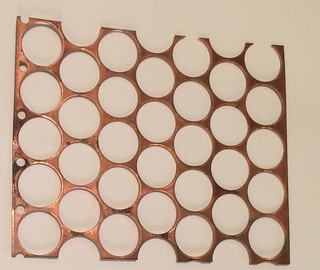 The sieve and the process for sorting out undersize and malformed blanks. Before coining, production run blanks from the blanking presses are dispersed over a vibrating mesh slightly smaller than the size of an acceptable planchet; clips and other debris fall through the mesh leaving correct size blanks above which flow to a separate hopper. Blanks with clips, both straight edge and crescent shape – formed from blanking near the edge of the strip or already blanked areas – are found in the rejects (which are later melted for reuse). Clean scrap from this source, scissel, is excellent for recycling because it is already the correct composition metal. Correct size planchets can then be annealed, cleaned, upset and fed into the coining presses. Mechanical riddling replaces expensive human visual inspection.
The sieve and the process for sorting out undersize and malformed blanks. Before coining, production run blanks from the blanking presses are dispersed over a vibrating mesh slightly smaller than the size of an acceptable planchet; clips and other debris fall through the mesh leaving correct size blanks above which flow to a separate hopper. Blanks with clips, both straight edge and crescent shape – formed from blanking near the edge of the strip or already blanked areas – are found in the rejects (which are later melted for reuse). Clean scrap from this source, scissel, is excellent for recycling because it is already the correct composition metal. Correct size planchets can then be annealed, cleaned, upset and fed into the coining presses. Mechanical riddling replaces expensive human visual inspection.
To read the complete entry on the Newman Numismatic Portal, see:
Riddler, Riddling
(https://nnp.wustl.edu/library/dictionarydetail/516658)
To read the earlier E-Sylum article, see:
VOCABULARY TERM: MULTIPLE BLANKING
(https://www.coinbooks.org/v26/esylum_v26n25a19.html)
MYRON GUST XENOS (1938-2025)
E-Sylum Feature Writer and American Numismatic Biographies author Pete Smith submitted this article with more biographical details about the late Myron Xenos. Thanks! -Editor
Myron Xenos was born in Cleveland, Ohio, on August 3, 1938. He was the son of Demetrios a/k/a James Constantin Xenos (1898-1985) and Maria a/k/a Margaret Fanelli Xenos (1910-2012). His father was in the restaurant business and later accounting business
Demitrios Xenos (age 36) and Maria Xenos (age 24) were on a passenger list arriving in New York from Naples and headed for Salineville, Ohio, in 1934. Demitrious was naturalized in Cleveland in 1938.
James and Margaret were listed in Cleveland for the 1930 Census. This indicates they were already in America prior to 1934. They may have used different names for different purposes.
I was unable to find James, Margaret or Myron in the 1940 or 1950 Census. I suspect there was an error in spelling their name.
In 1956, Xenos showed an award winning exhibit of stamps at the FIPEX show in New York.
Myron graduated from Rocky River High School in 1956. In his senior year, he appeared on stage in a class play. He joined the Army in 1958 and served through his college years. He graduated with a B. S. from Kent State University in 1962.
Myron G. Xenos joined the American Numismatic Association in September 1961 as member 42733. At the time he was living with his parents at 22614 Center Ridge Road in Rocky River, Ohio. Rocky River is a suburb of Cleveland on Lake Erie.
Myron married Daryl Lee Eckert on December 16, 1961. They had two daughters, Stacey and Stefanie. They were married for 63 years.
Xenos was the proprietor of Cartwheel Coin Co, in 1963 to 1965, operating out of P.O. Box 2971 in Rocky River, Ohio. In 1967 he was affiliated with Security Coin Trust selling out of the Sheraton-Cleveland Hotel.
In 1964, Xenos made a presentation to the West Cuyahoga Coin Club on "How to Keep and Protect your Coins." In 1969, he spoke about "Crowns of the World."
In 1969. Rocky River Mayor-elect Earl Martin named Myron G. Xenos to be his part-time finance director at a salary of $9,000 per year. At the time he was president of the Cleveland chapter of the Ohio Public Accountants Society. Xenos declined a full-time position and was replaced in 1970.
In 1971, he joined his brother-in-law Gary B. Eckert and Harry Mueller with Leo Vending.
In 1974, Xenos served on the City Plan Commission.
An article in The Plain Dealer on January 31, 1976, showed Myron G. Xenos watching the removal of a Tiffany stained-glass window from the Humanist Fellowship of Liberation Church. The window was 13.5 feet high and four feet wide. It was packed and shipped to Louisville, Kentucky, for restoration. It was reported that Zenos owned more than fifty major works of stained-glass art.
In 1976, Xenos proposed the Tiffany Ridge townhouse development on Center Ridge. The 23 condominiums were completed by 1978. Some of the units have leaded stained-glass windows. On this venture, Xenos was a partner with Xenophon Zapia.
 The Beachcliff Motion Picture Theater closed in June 1976. By 1978 it had been transformed
into Beachcliff Market Square at 19290 Detroit Avenue in Rocky River. A featured restaurant
was Myron's Ice Cream Parlor and Delicatessen. This was described in The Cleveland Press for
April 29, 1978.
The Beachcliff Motion Picture Theater closed in June 1976. By 1978 it had been transformed
into Beachcliff Market Square at 19290 Detroit Avenue in Rocky River. A featured restaurant
was Myron's Ice Cream Parlor and Delicatessen. This was described in The Cleveland Press for
April 29, 1978.
"Myron Xenox is the proprietor of Myron's and he has been assembling the antiques that have been incorporated into his restaurant for some 20 years. All of the rooms are rich with stained glass windows. antique woods and handsome chandeliers from many of the razed mansions and churches of Greater Cleveland."
WVIZ, Channel 25, is a PBS affiliated TV station in Cleveland. They conduct annual fund-raising auctions of donated items with a panel of volunteer auctioneers. In 1970, one of the items was to serve as an auctioneer for an upcoming sale. Xenos won the bid and became a regular on the show. Myron Xenos was responsible for the antique and collectibles parts of the sale.
In the 1970's Xenos was part-owner of a race horse, or more specifically, a trotter.
The first ad for The Money Tree ran in the September 1980 issue of The Numismatist. Xenos was looking to buy foreign crowns. Their address was 1260 Smith Court in Rocky River. The ads ran every other month until June 1981. Money Tree Trivia: The office cats were named Andy and Cheetah.
Myron was wandering around a Cleveland coin show in 1985, when his friend, Phil Aftoora, introduced him to another local numismatist with an interest in literature, Ken Lowe. The rest, as they say, is history. Now if only there was someone around to write up that history.
Money Tree began mail bid sales of numismatic literature with their sale of July 11, 1987, with cataloguing primarily by Ken Lowe. Myron still had his accounting business and Ken was a high school English teacher. The venture was a part-time effort for both of them, or perhaps, at times, a second full-time job.
The series ended with their 32nd public and mail bid sale of Numismatic Literature featuring the library of Kenneth Lowe on November 27, 1999, and December 4. 1999, cataloged by David Sklow who left to move to Florida. In 2000, Myron discontinued the mail bid and auction sales.
 Money Tree began publication of their house organ, Out on a Limb, with the issue of August 1.
1987. That first issue included an amusing report, "An Evening with the Norwebs." The writing
style was witty, sometimes half-witty, amusing and often satirical. Ken offered colorful
descriptions of many people he met. The publication was honored as the best commercial
publication by the NLG in 1988. In Volume 11, No. 1, dated January 1, 1998, Ken Lowe
promised there would be three issues in 1998. It was not to be.
Money Tree began publication of their house organ, Out on a Limb, with the issue of August 1.
1987. That first issue included an amusing report, "An Evening with the Norwebs." The writing
style was witty, sometimes half-witty, amusing and often satirical. Ken offered colorful
descriptions of many people he met. The publication was honored as the best commercial
publication by the NLG in 1988. In Volume 11, No. 1, dated January 1, 1998, Ken Lowe
promised there would be three issues in 1998. It was not to be.
In 1989, Money Tree published fifty copies of The Invasion of Louisville / A Visit to the Armand Champa Library / A Very Short Story with Lots of Pictures. The event occurred on July 23, 1988, with photos by Myron. There are many pictures of about fifty biblio-luminaries with amusing captions but not one identification. Has there ever been an identification key published?
In June 1991, the first ad in The Numismatist appeared for The Money Tree offering numismatic literature with Myron and Ken Lowe named. These ads ran for three months.
In 1992, Xenos and Lowe went into the publishing business with their subsidiary, Gold Leaf Press. There first project was American Numismatic Biographies, compiled by Pete Smith and printed through the efforts of Remy Bourne.
At the 1992 ANA Convention. Myron competed with partner P. Scott Rubin as "The Bookies" in the World Series of Numismatics competition. Joined by drafted rookie, John Kraljevich, they came in second.
Money Tree published Rare Coin Review. 1969-1994: An annotated index of the first 100 issues.
In 1995, Gold Leaf Press produced their second project, Bust Half Fever, by Edgar Sauders.
Ken Lowe died too young on February 23, 1998. David Sklow became a partner in October 1998. Myron made a 1998 presentation to the NBS on "A History of Cleveland Coin Dealers."
At the 2000 Philadelphia ANA Convention, Myron had a Numismatic Theater presentation on "Audit-Proofing Your Taxes, Currency Transactions and 1099 Reporting."
In December 2000, Money Tree offered The Ultimate Guide to Attributing Bust Half Dollars by Glenn R. Peterson. It was published by Money Tree Press.
Xenos received a second-place award for his article in The Asylum, "Mendacity Rears Its Ugly Head." (Spring 2004)
Xenos contributed "You Don't Say / Numismatic Gleanings From the Past" to the Winter 2002 issue of The Asylum, journal of the Numismatic Bibliomania Society. He also contributed "You Don't Say: Numismatic Quarterly Quiz." This ran quarterly from 2009 to 2014. Myron also made occasional contributions to The E-Sylum.
For an article in The Asylum for 2005, Myron reflected upon his time with Ken Lowe.
"It was an interesting and rewarding 15 years and I certainly feel privileged to have been able to be a continuing part of it. The Numismatic Bibliomania Society has certainly been the glue that has held the book lovers together for 25 years and I, for one, will try to be around for the next 25 years."
In July, 2011, Xenos was noted as an ANA fifty-year member and in August 2021, as a 60-year member.
Myron suffered from Parkinson's in recent years. The last time I saw him was at a recent ANA convention. We spent some time together in the Food Court.
Myron died on July 20, 2025, in North Ridgeville, Ohio. He will be buried with his parents at Lakewood Park Cemetery in Rocky River.
TREASURE TALK WITH BOB EVANS, EPISODE 6.2
In January, our good friend Bob Evans began publishing a series of blog articles on the Finest Known website detailing his experience as co-discoverer and curator of the treasures recovered from the wreck of the S.S. Central America. Subject of the book "Ship of Gold", many exhibits, countless interviews and articles, books and auction catalogs feature the legendary haul of gold coins, bars, nuggets, gold dust and more from the 1857 shipwreck. Here's another excerpt - see the complete article online. -Editor
The next April found me back at sea working on the shipwreck I last saw 23 years previously. The crew of the Odyssey Explorer treated me, at first an outsider, with real respect, which I truly appreciated. I will admit that a whole mental circus unfolded in my mind as I felt like a native guide ushering a team of world class explorers into a place that only I knew well. Or I thought I knew it well.
The technology in 2014 was worlds removed from the tech of 1991. During the receivership hearing in 2012, I was asked about any plans I had for future expeditions, and I testified that the first step should be a thorough survey of the entire shipwreck site. And that is what happened, a full photo-mosaic and multi-beam sonar survey, mapping the whole main shipwreck and surrounding debris field. I remember team members enjoying the sport of browsing through the images of the photo-mosaic, looking for piles of coins in the debris field, and recording each such location. Each image, slightly overlapping the previous one, represented a straight-down photo from 2 or 3 meters above the seabed. I recall hearing some delighted remarks as piles of gold coins marched into view, "Whee!" "Bingo!" "Yahtzee!" "Jackpot!"
There was so much variety in the coin piles representing passenger money, more than we had ever seen from the commercial shipment, which was dominated by gold bars and boxes of double eagles. Now we had the whole coin shop. Gold coins ranged from tiny 25¢ California Fractional Gold to $20 double eagles, found sometimes in close juxtaposition.
They arranged a screen for me and started scrolling through the dive's frame grabs. The coffee was kicking in, so I began yakking, sharing my experience and commenting skeptically, "Oh yeah. We saw all kinds of iron boxes, giant and small. Those water tanks are big iron boxes, you know? Back in ‘91, we landed next to a smaller box once and cut into it. Nothing. Maybe a box of tools or nails or…"
 The right scene appeared on the screen, and I abruptly stopped gabbing.
The right scene appeared on the screen, and I abruptly stopped gabbing.
My jaw dropped as I slowly intoned, "That… could be… a safe."
The others laughed at my reaction, and then we discussed this new discovery. We puzzled over the box for some time, but the general consensus was that it was, in fact, a safe. Its location 28 meters from the port side of the shipwreck was a mystery, but it honestly looked like a cast iron box with legs, lying on its side, and covered with both rust and biology.
Could we recover it? Intact? Or was that too risky? It must be heavy – it's a safe.
It was better to open it in place than to risk a disaster by moving it. We pushed on the second hinge, and the heavy door crumbled onto the sediment clouding our view. Once it cleared, we could see different chambers inside. There appeared to be unknown contents sitting there, having waited 157 years to be seen again.
 We decided to try to recover the big parcel sitting in the original lower left chamber, just inside the door.
We decided to try to recover the big parcel sitting in the original lower left chamber, just inside the door.
That might be important!
When we finished the dive and Zeus was on deck, we opened the drawer and carried the bags to the secure "Coin Room" to be examined. We opened the small bag and found it contained US half dollars and quarters. Standard protocol needed to be followed, so we fully examined and identified each coin, photographing the "new" ones (coin denomination-year-mint combinations that had not yet been seen during the season.) Since this was the year's first encounter with a hoard of US silver, there were a lot of "new" coin photographs and entries into the spreadsheet. It took a couple hours. The Odyssey guys were professionals, but they weren't too thrilled with silver, since they had seen huge numbers of silver coins on the S.S. Republic and the Mercedes.
While we were trudging through the quarters and halves, conversation ran to the other, larger bag. Since this bag held silver, was the big bag full of gold? The bag sat on the exam table awaiting opening. Coins inside pressed against the wet canvas, blackened by the 157 years in a deep-sea swamp. The bulging impressions looked like small coins. Could this really be a bag of small gold? That would be fantastic!
Fred van der Walle, the conservator, stood over the bag sitting on the wet examine table. The tabletop consisted of a large, inverted, plastic bin cover, with a black rubber mat covering the inside surface. This gave us a shallow tub that contained any spills, or at least most of them. It got pretty wet in there at times. Fred opened the bag as anticipation mounted. He announced, somewhat dejectedly, "It looks pretty black." Then he reached in with his exam-gloved-hand and pulled out a handful of coins, plopping them onto the black rubber. Then he poured out some of the contents.
I figured it was the purser's safe.
 And now we had a bag of almost 9,000 dimes. Obviously, this was not being shipped from San Francisco. This was the cash box of the ship, the working funds for a major, mid-19th century business. And it was yet another treasure within the treasure. Entirely different from the commercial shipment and personal gold carried by passengers from California, this was an east-coast treasure.
And now we had a bag of almost 9,000 dimes. Obviously, this was not being shipped from San Francisco. This was the cash box of the ship, the working funds for a major, mid-19th century business. And it was yet another treasure within the treasure. Entirely different from the commercial shipment and personal gold carried by passengers from California, this was an east-coast treasure.
To read the complete article, see:
Treasure Talk: Episode 6 Part 2 Dimes – another "Collective" favorite
(https://finestknown.com/treasure-talk-episode-6-part-2dimes-another-collective-favorite/)
For the complete series, see:
Category Archives: Treasure Talk with Bob Evans
(https://finestknown.com/treasure-talk-with-bob-evans/)
To read the earlier E-Sylum article, see:
TREASURE TALK WITH BOB EVANS, EPISODE 1
(https://www.coinbooks.org/v28/esylum_v28n12a12.html)
TREASURE TALK WITH BOB EVANS, EPISODE 2.1
(https://www.coinbooks.org/v28/esylum_v28n13a17.html)
TREASURE TALK WITH BOB EVANS, EPISODE 2.2
(https://www.coinbooks.org/v28/esylum_v28n14a15.html)
TREASURE TALK WITH BOB EVANS, EPISODE 3.1
(https://www.coinbooks.org/v28/esylum_v28n15a16.html)
TREASURE TALK WITH BOB EVANS, EPISODE 3.2
(https://www.coinbooks.org/v28/esylum_v28n17a16.html)
TREASURE TALK WITH BOB EVANS, EPISODE 4.1
(https://www.coinbooks.org/v28/esylum_v28n18a13.html)
TREASURE TALK WITH BOB EVANS, EPISODE 4.2
(https://www.coinbooks.org/v28/esylum_v28n19a20.html)
TREASURE TALK WITH BOB EVANS, EPISODE 5.1
(https://www.coinbooks.org/v28/esylum_v28n22a13.html)
TREASURE TALK WITH BOB EVANS, EPISODE 5.2
(https://www.coinbooks.org/v28/esylum_v28n23a16.html)
TREASURE TALK WITH BOB EVANS, EPISODE 6.1
(https://www.coinbooks.org/v28/esylum_v28n27a14.html)
STACKS BOWERS TO SELL JAMES STACK COLLECTION
Stack's Bowers will be selling the James A. Stack, Sr. Collection of United States coins in two parts, the first in December 2025 and the second in February 2026. Here is the press release. -Garrett
Stack's Bowers Galleries is honored to announce the sale of selections from the James A. Stack, Sr. Collection. Projected to bring upwards of $20 million, the over 200 coins to be offered from the collection have been off the market since at least his passing in 1951. Several individual pieces are valued in excess of $1 million each.
Mr. Stack, who had begun collecting coins and paper money by the late 1930s, set the goal of building as complete a collection of U.S. coins as time would allow him. In a relatively short time, he built one of the greatest (yet underappreciated) collections of U.S. coins of all time. He took full advantage of an era in numismatic history when major collections were coming to market in droves, both for private purchase and via public auction. Verging on completeness, the Stack collection at his passing included many major rarities like an 1802 half dime, 1894-S dime, 1838-O half dollar, the finest known 1870-S silver dollar, and an 1815 half eagle, all of which were sold in previous auctions by Stack's Rare Coins (predecessor firm to Stack's Bowers Galleries). In 1944 he even acquired a 1933 double eagle, which was surrendered to the U.S. Secret Service in 1945, never to be seen again. The only remaining trace of this coin is a solemn handwritten note under the empty space in the album where his 1933 had once resided: "Secret Service has mine."
Had the James A. Stack, Sr. Collection been sold in a single, concentrated auction offering, it would have been remembered as one of the greatest coin collections of the 20th century, if not of all time. But that was not to be. During his collecting life, Mr. Stack kept a low profile, often buying coins through agents like his friends Joseph B. and Morton Stack, founders of Stack's Rare Coins who shared a last name but were not related. Dividing the vast collection among his three children, James A. Stack, Sr. stipulated that the coins be held intact and eventually be distributed among his grandchildren, after his youngest grandchild (at the time of his death) had turned 25.
As a result, none of his coins re-entered the marketplace until Stack's March 1975 auction that showcased James A. Stack, Sr.'s magnificent holdings of U.S. quarters and half dollars. Major auctions of additional portions of Mr. Stack's U.S. coin collection continued in the 1980s and 1990s, providing further insight into the completeness and significance of the collection.
Now, after a hiatus of 30 years, Stack's Bowers Galleries will continue the series of auctions of the James A. Stack, Sr. Collection begun exactly a half century ago by their predecessor firm.
For those actively collecting in the 1970s through 1990s, the name James A. Stack, Sr. is synonymous with quality and rarity. So, it will come as no surprise that highlights in this offering are many and include finest known specimens and previously undocumented major rarities, as well as the return of well-known rarities to the marketplace.
One major returning rarity will be James A. Stack, Sr.'s 1798 Small Eagle $5 gold piece. Last sold in B. Max Mehl's 1946 auction of the William Cutler Atwater Collection, it is the last of the five privately owned specimens to come to market in the 21st century. Now graded PCGS AU-53 CAC CMQ, it is one of nine coins in this offering to appear in the popular book, 100 Greatest U.S. Coins. It is also the sole example certified by CAC and CMQ. The last decade has seen the value of this extremely rare early half eagle climb from $1 million to $2 million to $3 million each time an example has appeared at auction.
A more contemporary rarity was just a few decades old when acquired by Stack: his 1911-D Indian $10 gold piece graded PCGS MS-66 CAC CMQ, which tops the census as the sole finest graded example of this key date. It is just one of several James A. Stack, Sr. coins that are the finest graded for their issues, or even for their entire series.
Among a small but very significant contingent of early silver dollars is a gorgeously toned 1795 Flowing Hair, 3 Leaves type of the common BB-27 variety but in uncommonly high grade: PCGS MS-64 CMQ. It was last seen in B. Max Mehl's 1948 auction of the C.A. Allenburger Collection, where it was called a "Perfect uncirculated specimen."
No fewer than 28 Territorial gold coins are included in this offering, nearly all of which have provenances dating to numismatic auctions from the 1910s through the 1940s. Half of the coins are from the collection of Hillyer Ryder; better known as a student of colonial numismatics, Ryder also assembled a world class but little known collection of U.S. Federal and Territorial gold coinage. The Territorial selection starts at square one with the first Territorial gold coin: an 1830 Templeton Reid $2.50 gold piece, graded PCGS AU-58 CAC CMQ that last appeared publicly in Henry Chapman's 1924 sale of the Arthur Nygren Collection.
In the weeks leading up to the August American Numismatic Association's World's Fair of Money in Oklahoma City, highlights freshly graded by PCGS (Professional Coin Grading Service), will be revealed to current collectors through Stack's Bowers Galleries' email announcements and social media accounts, such as Instagram, Facebook, and TikTok. Fair attendees will find a more complete display of the collection at the Stack's Bowers Galleries booth, including a heretofore unknown example of a storied U.S. coin whose identity will be revealed at the convention and through digital marketing.
Stack's Bowers Galleries is planning a series of two auctions of the James A. Stack, Sr. Collection, one in December 2025 and one in February 2026. The sales will both be held in Griffin Studios located at the firm's Costa Mesa, California Headquarters. Updates about the collection will be disseminated via Stack's Bowers Galleries' e-blasts, social media accounts, and at www.stacksbowers.com.
2200 YEAR OLD HOARD DISCOVERED IN CZECHIA
A 2,200-year-old Celtic settlement containing several hundred coins has been discovered near Hradec Králové in north-central Czechia. -Garrett
A 2,200-year-old Celtic settlement containing several hundred coins and over 1,000 pieces of jewelry has been discovered in the Bohemia region of the Czech Republic.
The site, "unparalleled in its scale and character in Bohemia," held a vast number of ancient riches, including amber and fine pottery, Museum of Eastern Bohemia representatives said in a translated statement. The site was not fortified, suggesting that the people who lived were major players in regional trade.
The settlement was discovered by archaeologists who were surveying the area before a motorway was built. In addition to the valuable artifacts, they found the remains of buildings, including dwellings, production facilities and at least one religious sanctuary, according to the statement.
The settlement, near the city of Hradec Králové in the north-central Czech Republic, was large — about 62 acres (25 hectares), or about the size of nearly 47 American football fields, said Tomáš Mangel, a professor of archaeology at the University of Hradec Králové who is co-leading the excavation.
Some of the coins are silver, and some are gold, the statement said. While it's not yet clear exactly how many coins have been found, there appear to be several hundred, Mangel told Live Science in an email. The jewelry includes "pieces of bronze and iron brooches, fragments of armlets, metallic components of belts, glass beads and armlets," Mangel said.
The site dates to the La Tène culture, an Iron Age culture that flourished in parts of Europe from roughly 450 to 40 B.C. The culture is generally associated with the Celts and has similarities in the crafting of its art and artifacts, many of which have anthropomorphic designs.
The newly found settlement helps us better understand how settlements were organized between the third century and the first century B.C., Mangel said.
Historically, the Celts were different groups that lived across continental Europe, including the Gauls in France and the Celtiberians in Iberia. Traditionally, the Celtic people who lived in Bohemia were believed to be from a tribe called the Boii. However, Mangel said we cannot be sure that the Boii actually lived at the newfound site. There were other Celtic groups that lived in the region and no inscriptions have been found at the site that tell us who exactly was living there.
To read the complete article, see:
2,200-year-old Celtic settlement discovered in Czech Republic — and it's awash in gold and silver coins News
(https://www.livescience.com/archaeology/2-200-year-old-celtic-settlement-discovered-in-czech-republic-and-its-awash-in-gold-and-silver-coins)
BARTON DISCUSSES COLONIAL NUMISMATICS
Great Bridge Battlefield and Historic Waterways Museum docent and numismatist Doug Barton gave a presentation on colonial numismatics documented in a story for The Virginian-Pilot. Here's an excerpt - see the complete article online. -Editor
Doug Barton is a numismatist — a coin and currency collector. He is also a docent at the Great Bridge Battlefield and Historic Waterways Museum in Chesapeake.
Barton blends his hobby with his interest in monetary history in a presentation that sheds light on the coins and currency used in American colonies during the Revolutionary War.
"During the American Revolution, there was no American money. What was spent most was Spanish reales," Barton said. "When the Jamestown colony was set up in 1607, the Mexico City mint set up by the Spanish had already been running for 71 years," he noted. "The eight-real coin — ‘the piece of eight' — was the main Spanish denomination."
In English colonies in America, money was a problem. English minted coins and printed currency were scarce because the English authorities frowned upon sending quantities of silver coins and currency to America in exchange for colonial-produced commodities.
From the English perspective, coins and currency made in the colonies were illegal. Simply possessing colony-made coins and currency could lead to arrest and incarceration — or worse. England refused to permit the colonists to mint or print mediums of exchange.
American colonists often freely engaged in bartering locally for goods, commodities and services. All transactions, whether barter, accounting write-offs, credit or cash, were carried out in denominations of English moneys — pence, shilling, crown, pound.
English coinage was scarce so colonists "pressed into service" any coin or currency available. Foreign coins and currency had to do in the absence of English coinage. Because foreign money came in different values and denominations, a system had to be adopted that was universally agreeable within the colonies.
"The Spanish pillar dollars — pieces of eight — that I have here all were actually circulated during the Revolutionary War. There were all kinds of denominations and coins circulating throughout the colonies," Barton said.
The Spanish real, Dutch lion daalder, French ecu and British crown were among the coins that were most disseminated in the American colonies.
"They finally decided that the best way to value the coins was by the weight of the coin," Barton said. "Most of these coins were worth 1 ounce of silver."
 After the Spanish coins, most of the other coins that circulated in the American colonies were Dutch. The Dutch settled New Amsterdam, which eventually became New York under British rule.
After the Spanish coins, most of the other coins that circulated in the American colonies were Dutch. The Dutch settled New Amsterdam, which eventually became New York under British rule.
"Their coins circulated and eventually spread out over all of the colonies," Barton said. "There were various Dutch businesses working in Virginia, so they probably helped bring Dutch coinage in here, too."
The Dutch lion dollar (Leewendaalder) was a large silver coin minted in the Dutch provinces and later in the Dutch Republic during the 16th-18th centuries with a lion rampant on one side of the coin. It was used by the Dutch to facilitate trade. It was regarded by many as the original silver dollar.
To read the complete article, see:
Coin collector shares American history at Great Bridge Museum
(https://www.pilotonline.com/2025/07/19/coin-collector-great-bridge/)
COINS FROM THE THIRTY YEARS WAR FOUND
A hoard of silver coins from the early 17th century, believed to have been hidden around 1634 during the Thirty Years' War, were found during a construction project in Germany. -Garrett
A rare archaeological discovery in Germany has captivated historians: Silver coins dating back to the early 17th century have been found inside a copper cauldron during excavations at Gotthardtkirchplatz in Brandenburg an der Havel, a historic city in northeastern Germany. The treasure is believed to have been hidden around 1634, during the chaos of the Thirty Years' War.
The discovery was made possible by a construction project for a new extension of the Youth Art Gallery Sonnensegel e.V., allowing archaeologists to investigate the site of a former half-timbered house. The building was abandoned and leveled in the 17th century — and now reveals a secret hidden for nearly 400 years.
Rare Coins from Across Europe
The kettle revealed imprints of coins measuring approximately 3 to 4 cm in diameter and 1.5 mm thick. The first coin discovered was a "Dicken" from Zug, Switzerland, dated 1610 and bearing the image of Saint Oswald. This initial find led the team to further sift through excavation debris.
In a remarkable twist, a volunteer monument conservator unearthed a half Dutch Reichsthaler from 1618 — the year the Thirty Years' War began. The final coin found was a city coin from Hamburg, dated 1634, featuring the name of Holy Roman Emperor Ferdinand II, who also ruled as King of Bohemia.
The wide geographic spread of the coins — from Switzerland, through the Rhineland, to Hamburg — raises compelling questions. Why were only three coins buried in such a large kettle? And what prompted the residents to hide them in the first place?
A Treasure That Sparks Questions
This rare silver find adds another chapter to Brandenburg's rich historical tapestry. Yet it leaves behind unanswered questions about life during the Thirty Years' War and the people who lived — and hid their treasures — at Gotthardtkirchplatz.
To read the complete article, see:
Hidden Treasure from the Thirty Years' War: Rare Silver Coins Found in Copper Cauldron in Brandenburg
(https://arkeonews.net/hidden-treasure-from-the-thirty-years-war-rare-silver-coins-found-in-copper-cauldron-in-brandenburg/)
BERMANIAN 50TH ANNIVERSARY COIN
The Shire Post Mint has issued an anniversary coin honoring His Royal Majesty of Bermania, King Alanus I. -Editor
Crowned bust of King Alanus I of Bermania, wearing collar of the Order of the Bear over royal mantle, with Latin inscription: * ALANVS · D: G: BERMANIAE · REX · ORB: TER: NOS: IMP: VEN: COM: &c. (translation: Alanus by the Grace of God King of Bermania, Emperor of Our Terrestrial Orb, Count of Fairfield, et cetera.)
Designed and engraved by Woody Maringer.
 It is our honor to formally announce this most numismatic event: the release of the Bermanian 50th Anniversary Coin. This commemorative off-metal strike of the Bermanian Coin is crafted from solid copper and finished with an expert patina to highlight the engraving of His Royal Majesty of Bermania, King Alanus I.
It is our honor to formally announce this most numismatic event: the release of the Bermanian 50th Anniversary Coin. This commemorative off-metal strike of the Bermanian Coin is crafted from solid copper and finished with an expert patina to highlight the engraving of His Royal Majesty of Bermania, King Alanus I.
If you've not heard of the Kingdom of Bermania, it's about time you get out from under your rock! This small but spirited kingdom is said to be nestled in the East Balkans, near the Danube River. Here, you may or may not become acquainted with plywood bears, chickens of mythic proportions, time travelers, royal purple Sikorsky S-38s, and even dragons with a particular appetite for prince fondue.
The reverse side of this coin depicts a key turning point in Bermania's story, The Fig Revolt of 1974 (though, some say 1975) and His Majesty's subsequent ascent to the throne. Many events such as these are further detailed in Please Ignore Our Time Machine, a rich history of Bermania published by King Alanus I himself. Check it out, you might learn something!
For more information, or to order, see:
Bermania Coin
(https://www.shirepost.com/products/bermania-coin?_pos=1&_sid=65289a951)
A Google search on our web archive brings up a nice AI-generated summary. -Editor
Bermania is a fictional micro-nation. It is featured in the writings of numismatist Allen G. Berman, also known as King Alanus I of Bermania. It has been a source of humorous stories and discussion within the numismatic community, particularly through the Numismatic Bibliomania Society's E-Sylum publications.
Key characteristics and mentions of Bermania on coinbooks.org include:
-
 Fictional setting: Bermania is described as a small Eastern European kingdom populated by eccentric characters, including talking horses and dragons.
Fictional setting: Bermania is described as a small Eastern European kingdom populated by eccentric characters, including talking horses and dragons.
- Humorous stories and publications: Allen Berman has written a book of short stories titled "Please Ignore Our Time Machine: Exciting Tales of Da Vinci, Pastrami, Time Travel, and Howard Hughes". This book recounts the adventures of the Bermanian people across the globe and centuries. It is available through the Royal Bermanian Printing Office in collaboration with Amazon.com.
- Numismatic connections: Bermania has a playful connection to numismatics, including discussions about its coinage, like the Royal Bermanian Tickle Token.
- "Inside joke" origins: Bermania began as an inside joke in the 1970s. It grew into a way of honoring friends through grants of arms and titles.
- "Redeemable" currency: King Alanus I of Bermania claims that Bermania's coinage is fully redeemable according to the 864 AD Edict of Pitres.
In summary, Bermania on coinbooks.org is a unique and humorous element within the numismatic literature world. It is largely associated with Allen G. Berman and his creative narratives that intertwine numismatics with tales of his imagined kingdom.
Alanus R adds:
"I hope he does well on his OMS issues, and that they help the world smile."
Congratulations to Alanus and his 50-year (so far) reign! What excitement and grandeur!
Is it too late to declare myself "Emperor Waynus of Uranus"? -Editor
To read the earlier E-Sylum articles, see:
COINAGE OF ALANUS I, KING OF BERMANIA
(https://www.coinbooks.org/esylum_v12n40a26.html)
NEW BOOK: PLEASE IGNORE OUR TIME MACHINE
(https://www.coinbooks.org/v23/esylum_v23n13a03.html)
BOOK REVIEW: PLEASE IGNORE OUR TIME MACHINE
(https://coinbooks.org/v23/esylum_v23n28a07.html)
ABOUT THIS ISSUE: JULY 27, 2025
Very busy week. I'm on the road with my family vacationing in Florida, and Garrett and I worked overtime last week and this one to complete the issue in advance. Any E-Sylum with an obituary is particularly challenging because of their larger size and multiple contributors, and we had two this week.
Two pleasant interludes came in the form of phone calls Thursday, when I had a chance to catch up with old friends Pat McBride and Mark Auerbach. I'd sent Mark a draft of the Myron Xenos obituary, where just the two of us are left standing from a 1989 biblio-gathering photo. And Pat and his alter ego Ben Franklin are well, with both planning appearances at the upcoming ANA and PAN shows; I expect to attend both shows, and hope to see a lot of our readers there! -Editor
Wayne Homren
Wayne Homren is the founding editor of The E-Sylum and a consultant for the Newman Numismatic Portal. His collecting interests at various times included U.S. Encased Postage Stamps, merchant counterstamps, Pittsburgh Obsolete paper money, Civil War tokens and scrip, Carnegie Hero Medals, charge coins and numismatic literature. He also collects and has given presentations on the work of Money Artist J.S.G. Boggs. In the non-numismatic world he's worked in artificial intelligence, data science, and as a Program Manager for the U.S. Department of Defense.
Garrett Ziss
Garrett Ziss is a numismatic collector and researcher, with a focus on American paper money and early U.S. silver and copper coins. He is also a part-time U.S. coin cataloger for Heritage Auctions. Garrett assists Editor Wayne Homren by editing and formatting a selection of articles and images each week. When he's not engaged in numismatics, Garrett is pursuing a Master's Degree in Quantitative Economics at the University of Pittsburgh.
Pete Smith
Numismatic researcher and author Pete Smith of Minnesota has written about early American coppers, Vermont coinage, numismatic literature, tokens and medals, the history of the U.S. Mint and much more. Author of American Numismatic Biographies, he contributes original articles to The E-Sylum often highlighting interesting figures in American numismatic history.
Greg Bennick
Greg Bennick (www.gregbennick.com) is a keynote speaker and long time coin collector with a focus on major mint error coins and US counterstamps. He is on the board of both CONECA and TAMS and enjoys having in-depth conversations with prominent numismatists from all areas of the hobby. Have ideas for other interviewees? Contact him anytime on the web or via instagram
@minterrors.
John Nebel
Numismatist, photographer, and ANS Board member and Fellow John Nebel of Boulder, CO helped the ANA and other clubs like NBS get online in the early days of the internet, hosting websites gratis through his Computer Systems Design Co. To this day he hosts some 50 ANA member club sites along with our
coinbooks.org site, making the club and our E-Sylum archive available to collectors and researchers worldwide.
Bruce Perdue
Encased coinage collector (encasedcoins.info) Bruce Perdue of Aurora, Illinois has been the volunteer NBS webmaster from its early days and works each week to add the latest E-Sylum issue to our archive and send out the email announcement.

